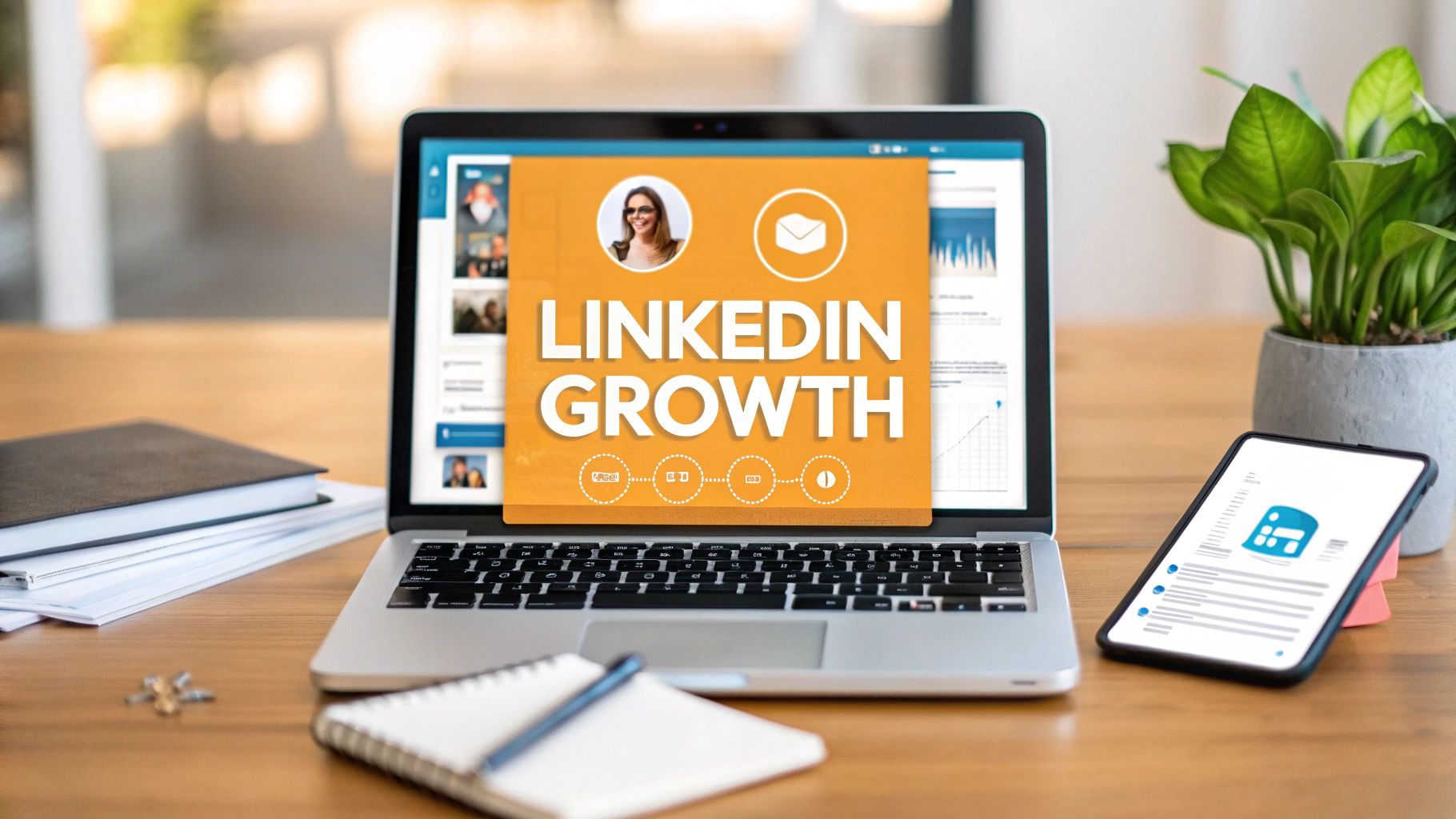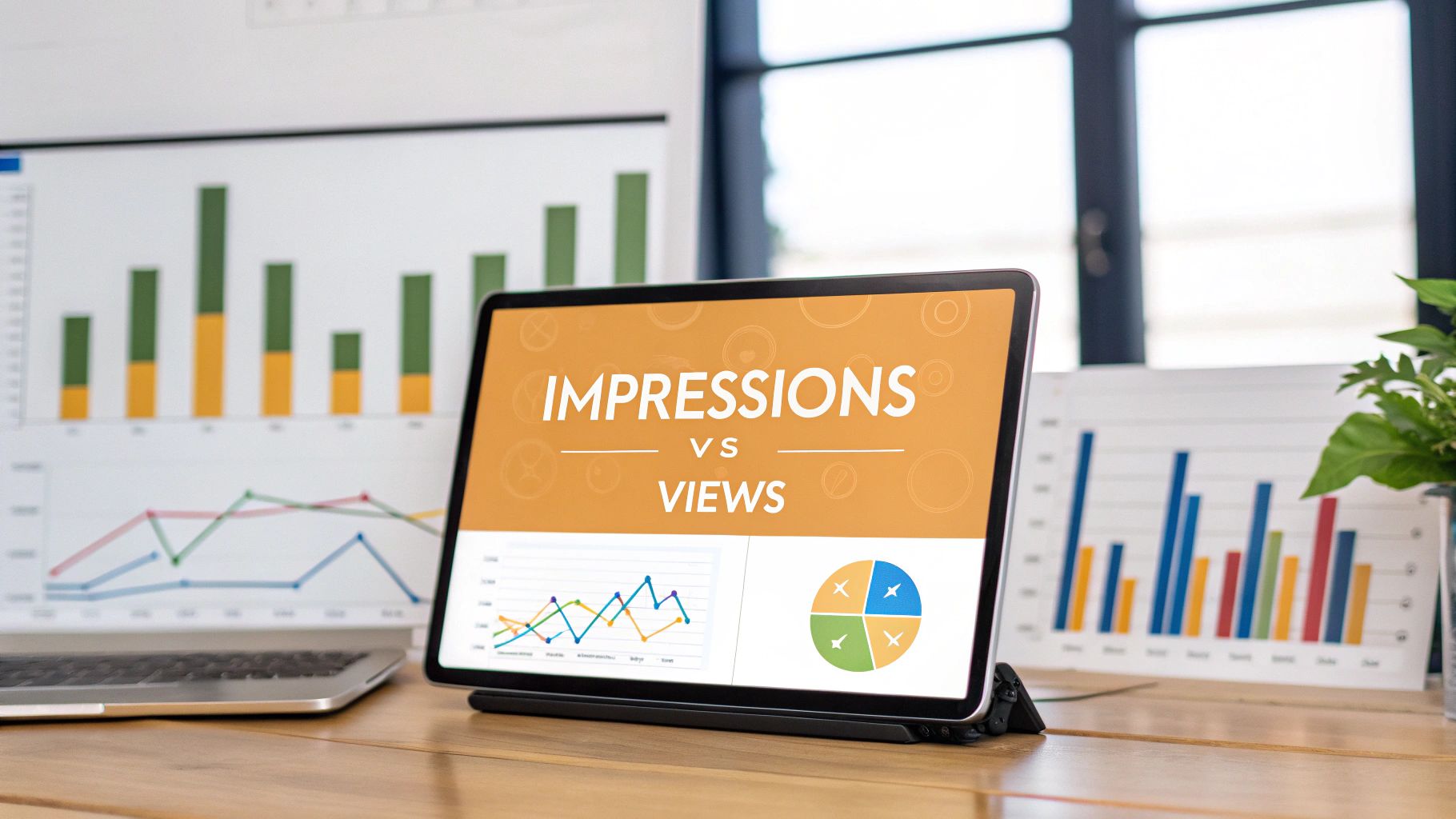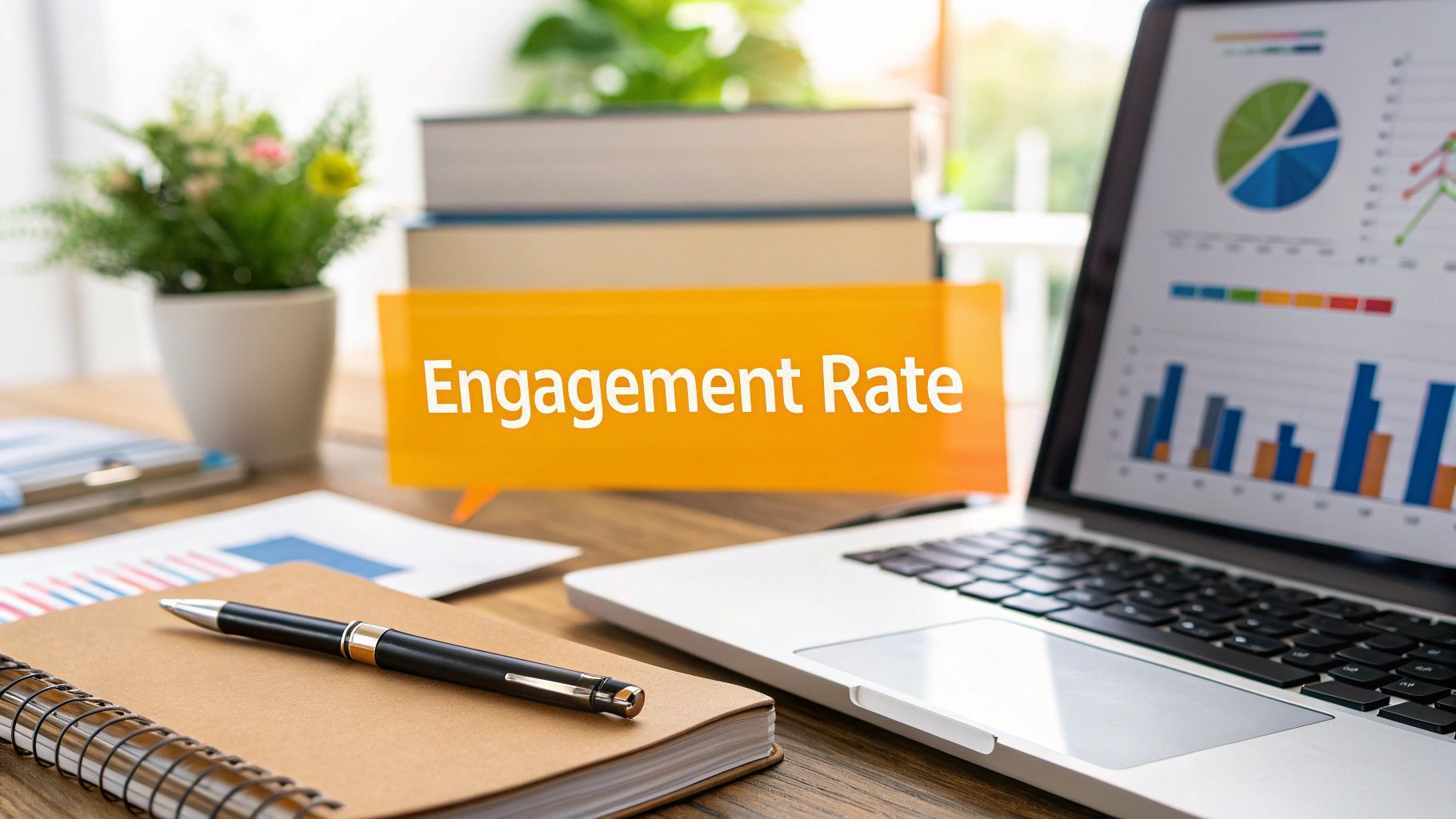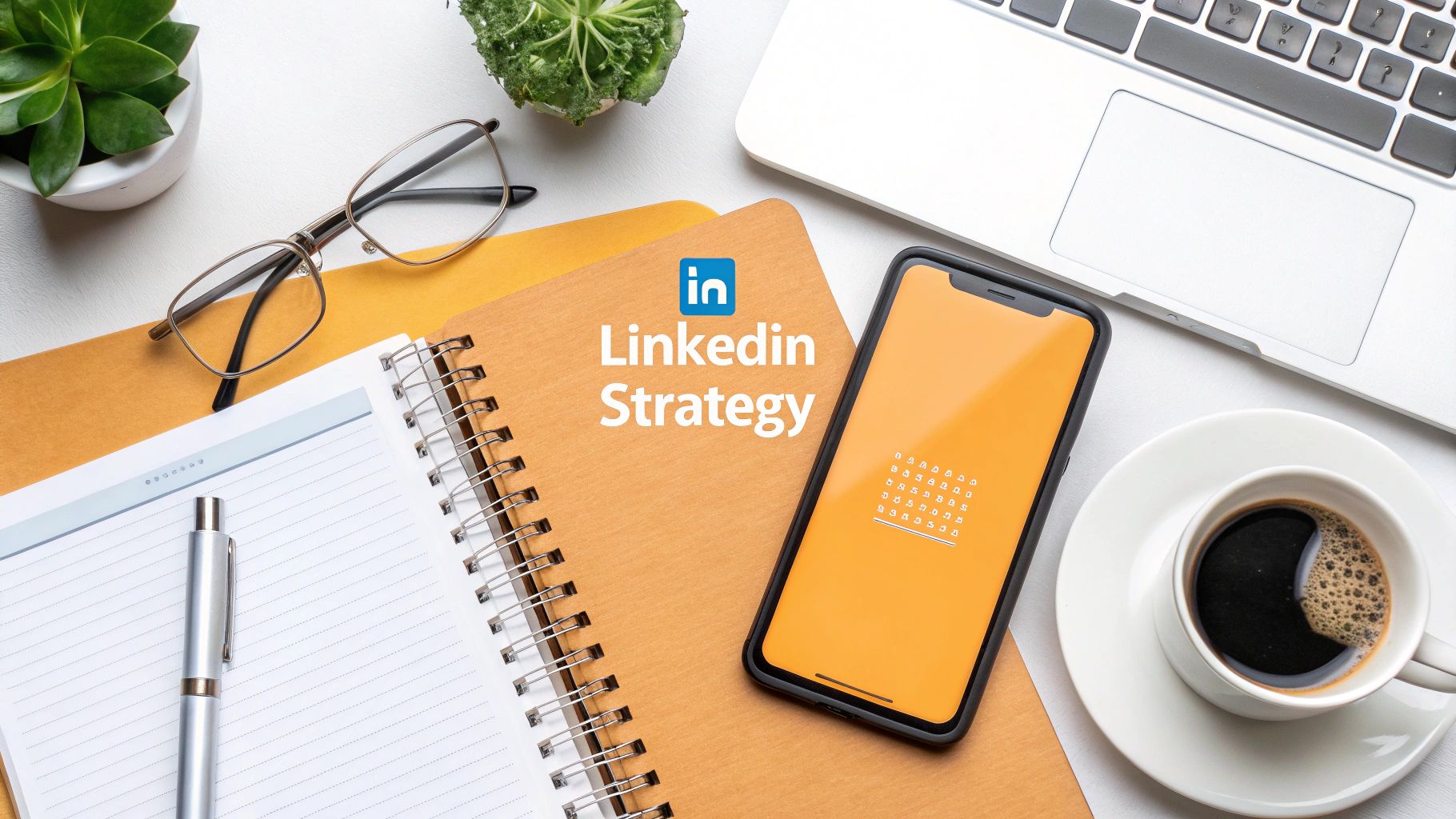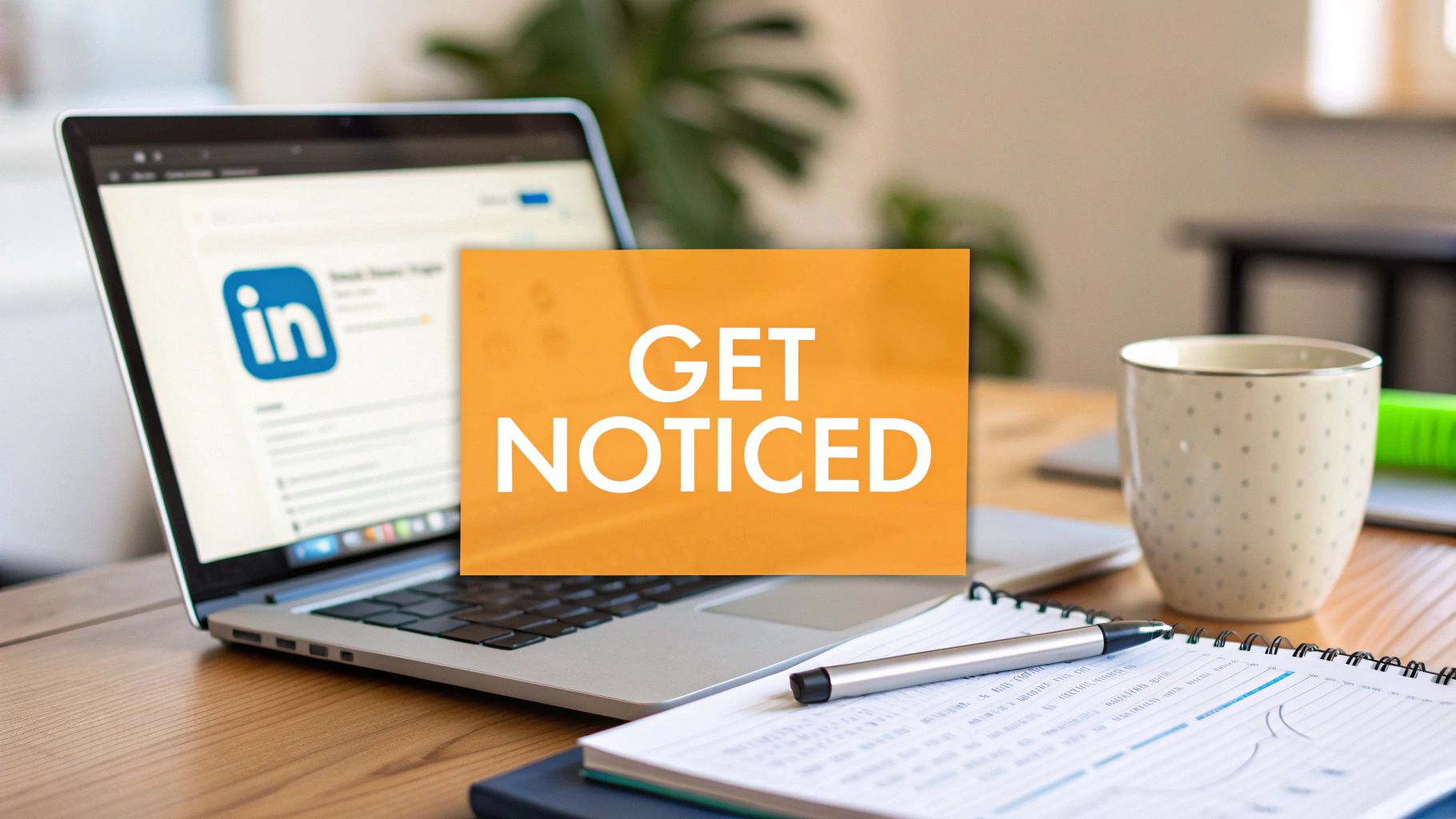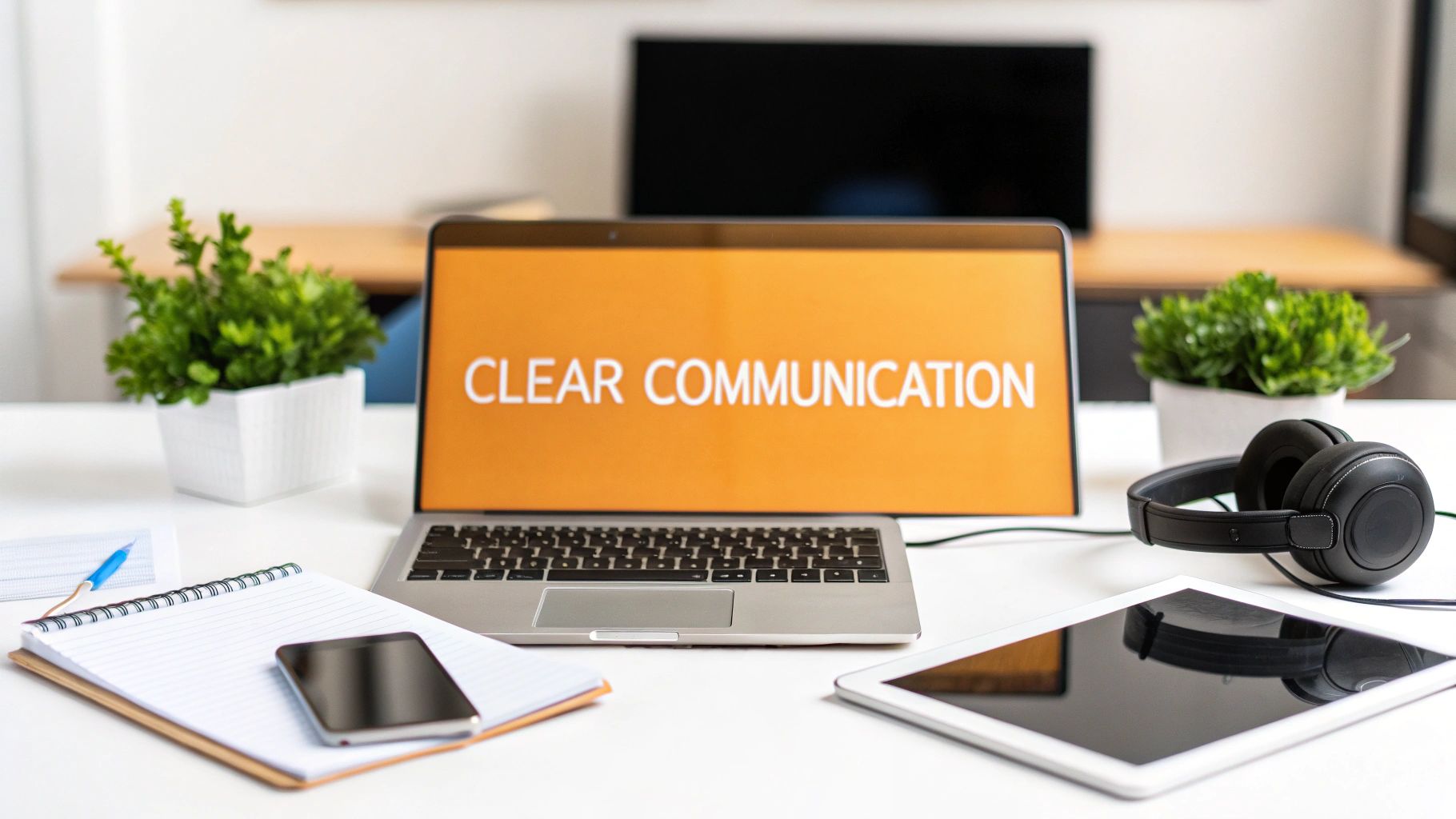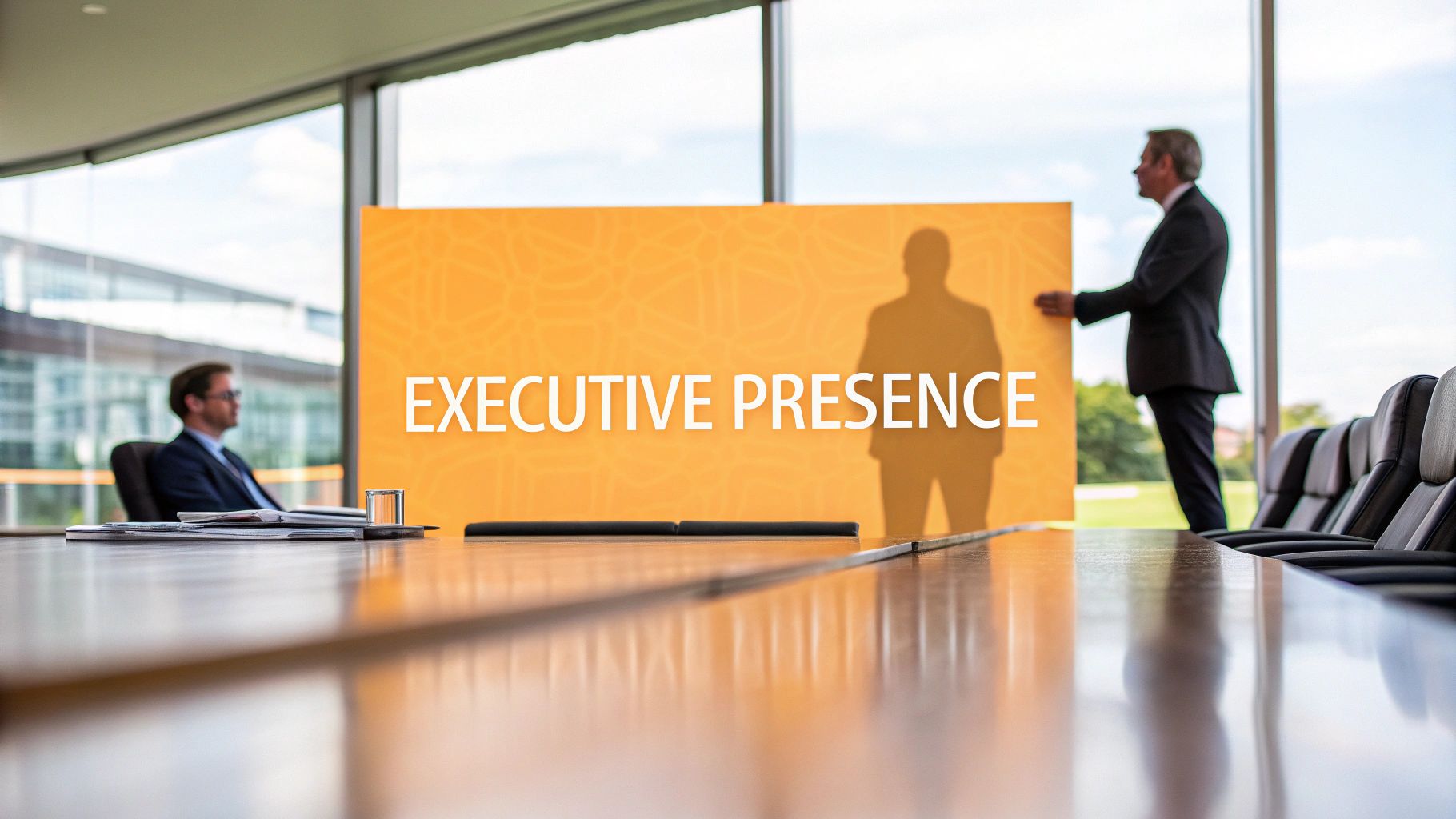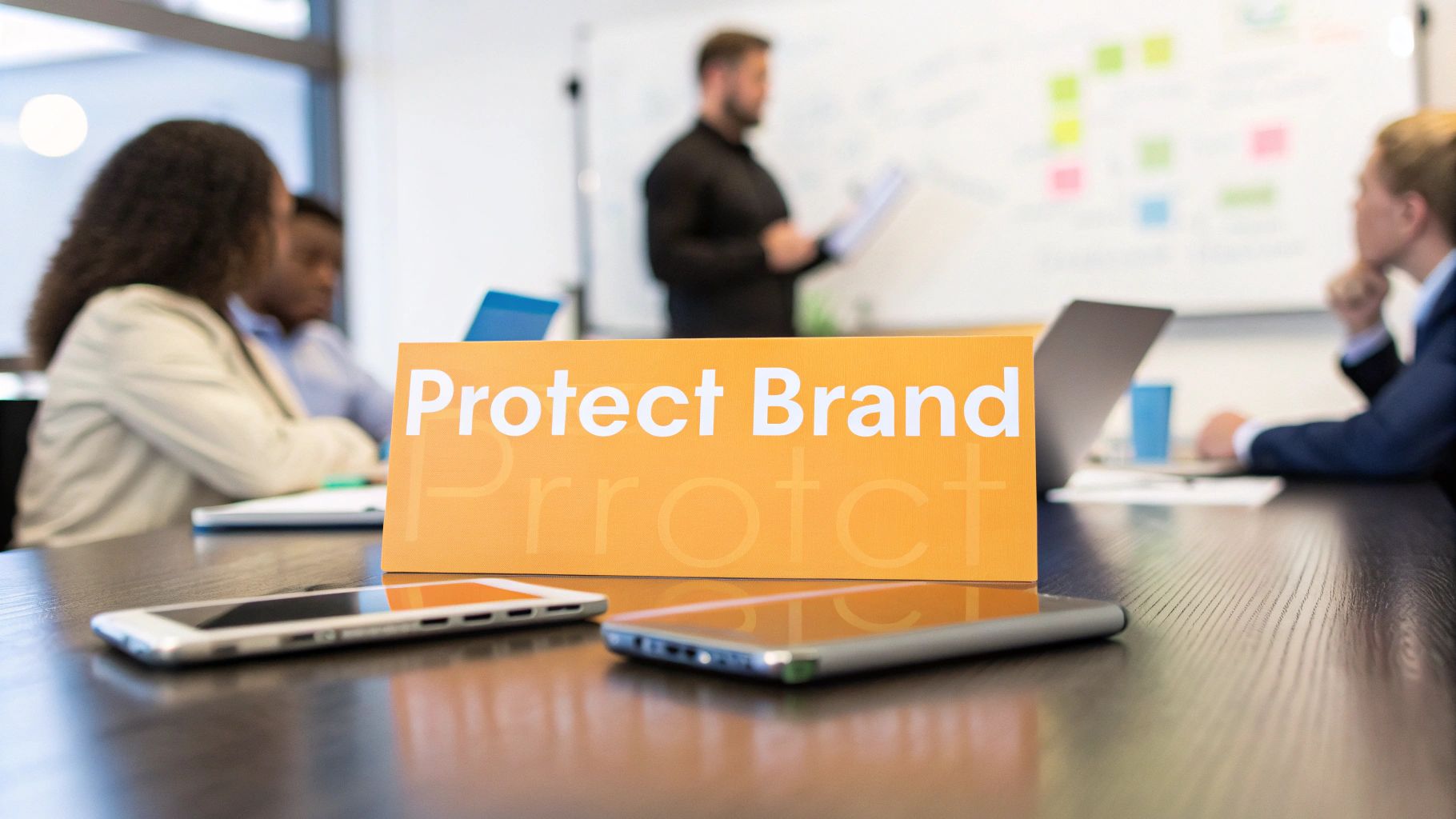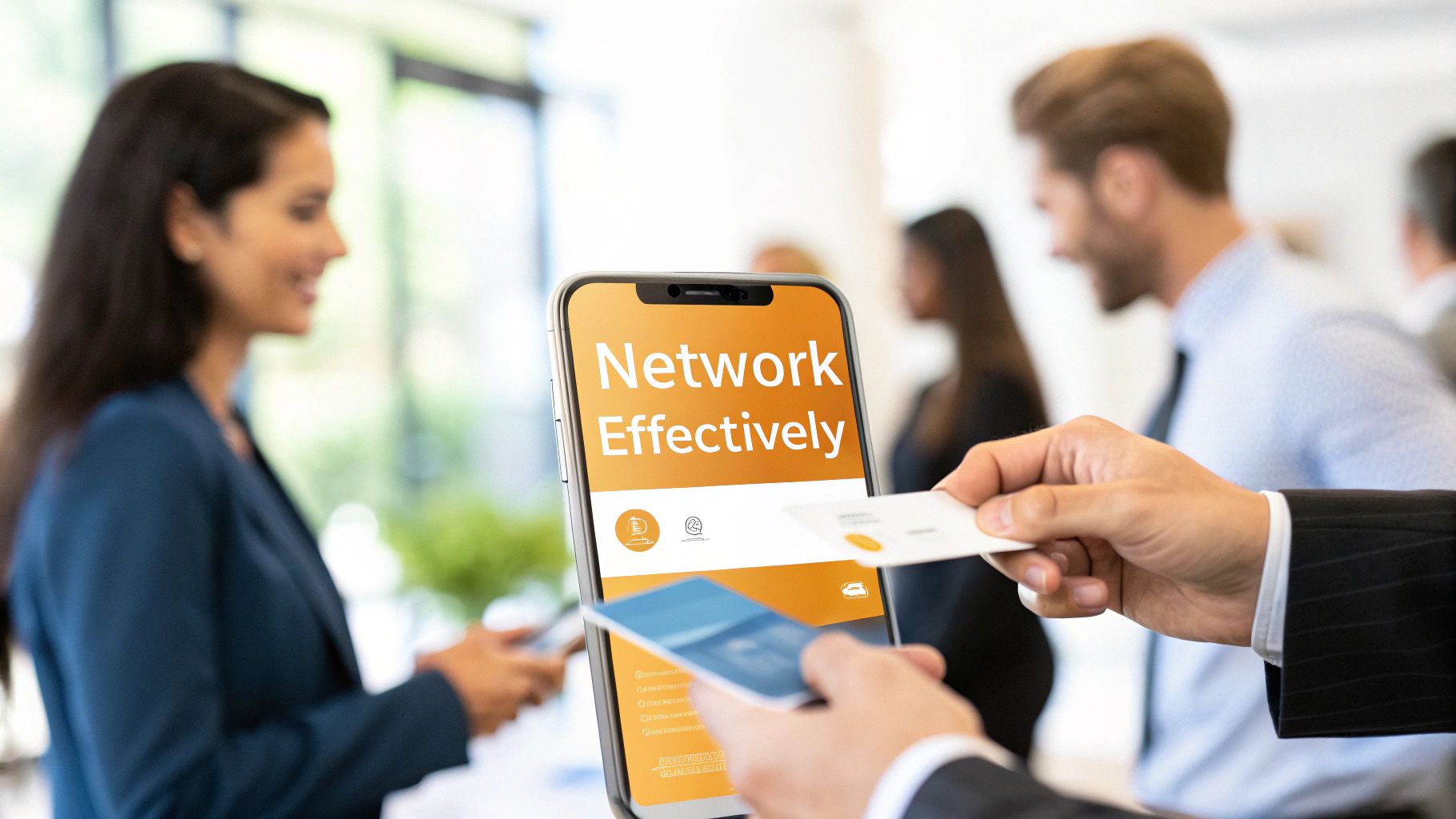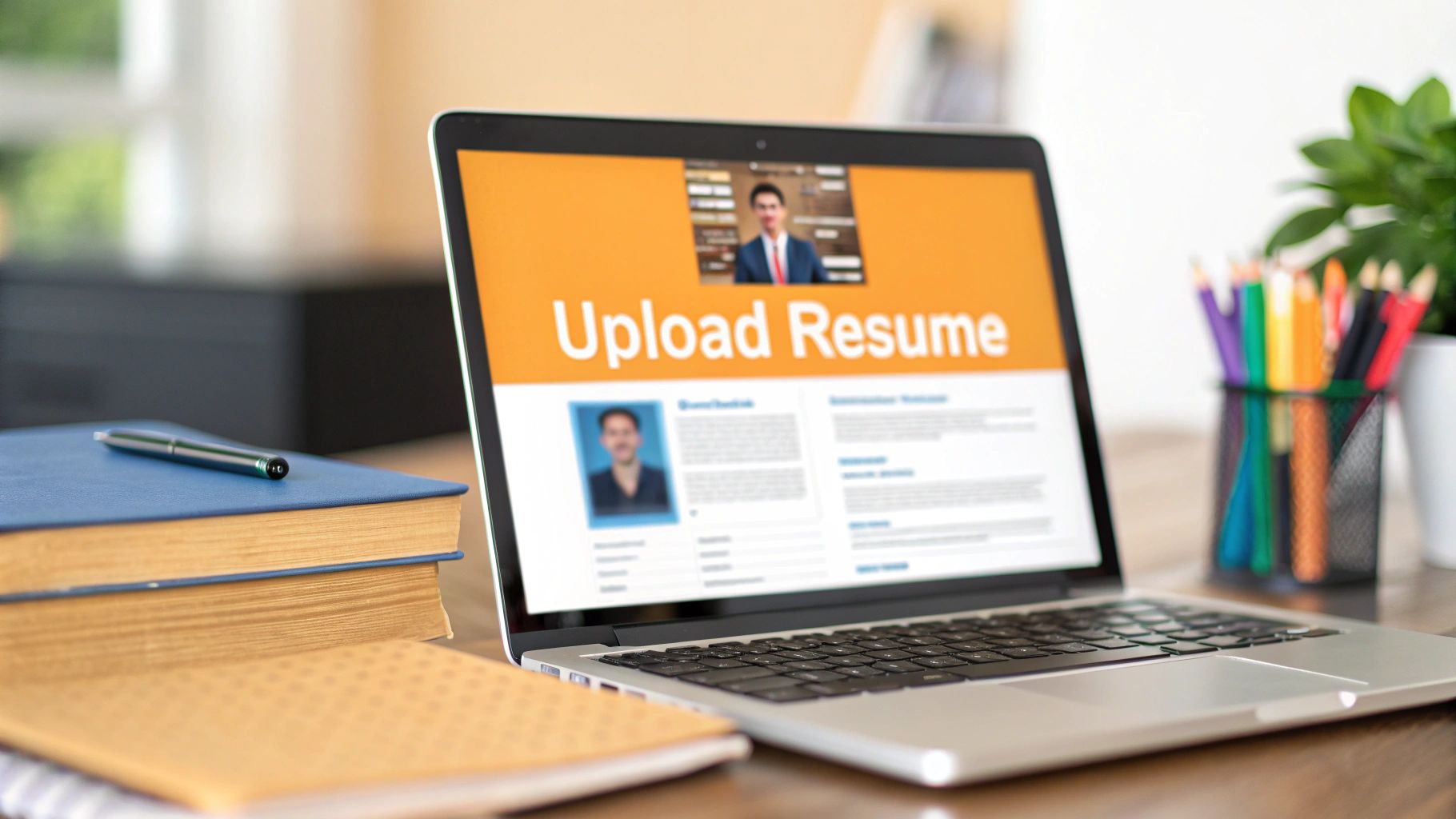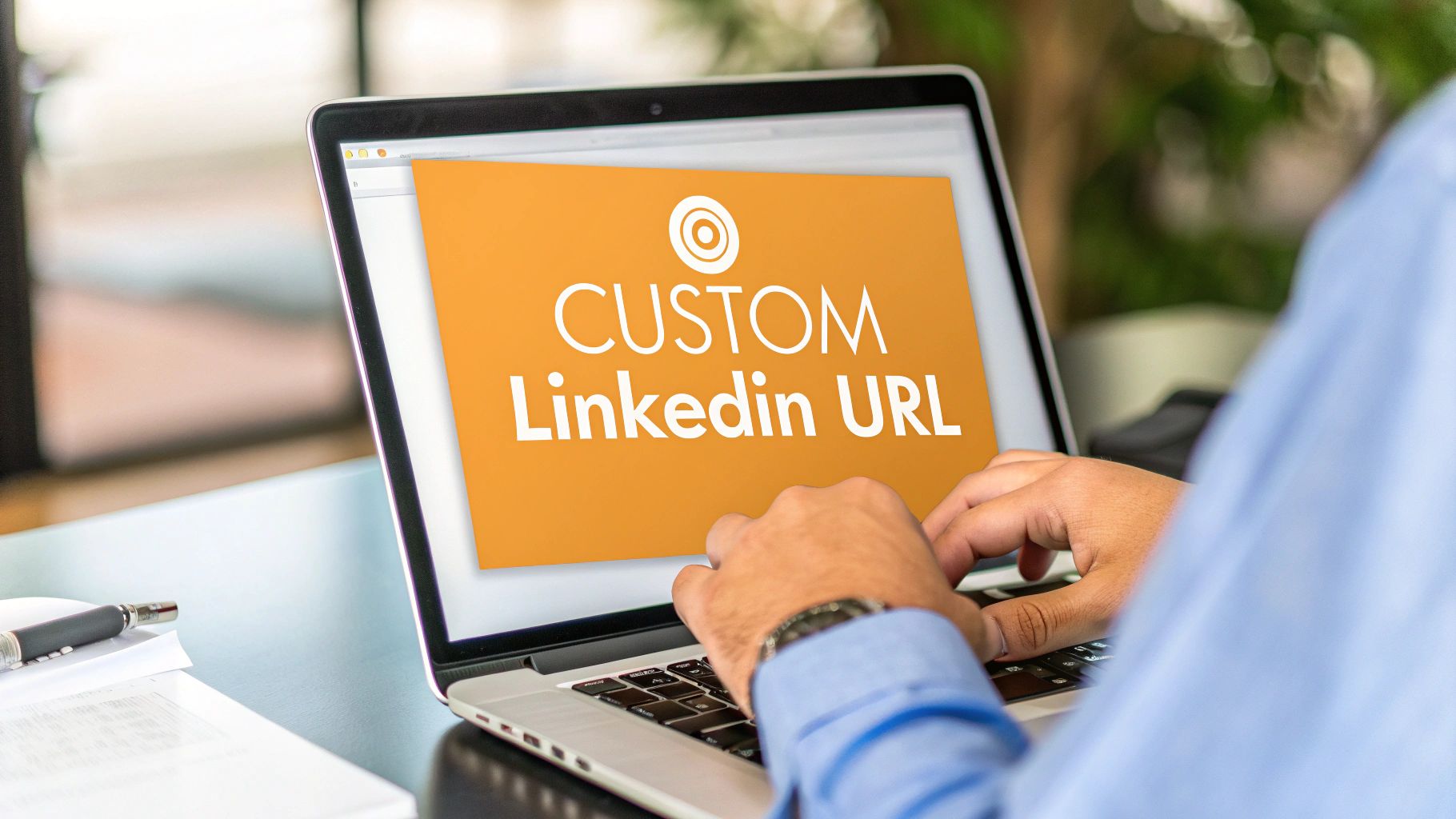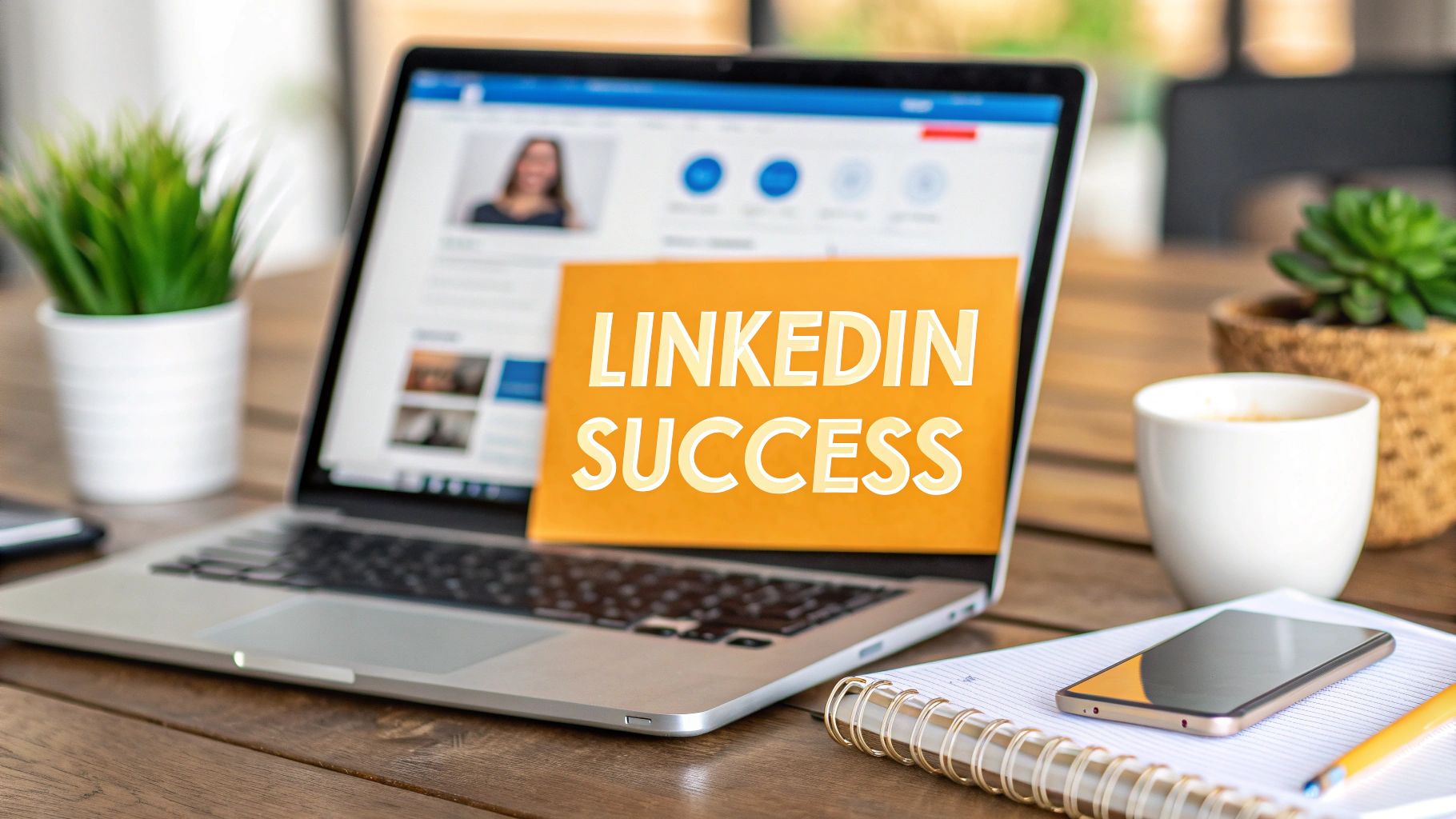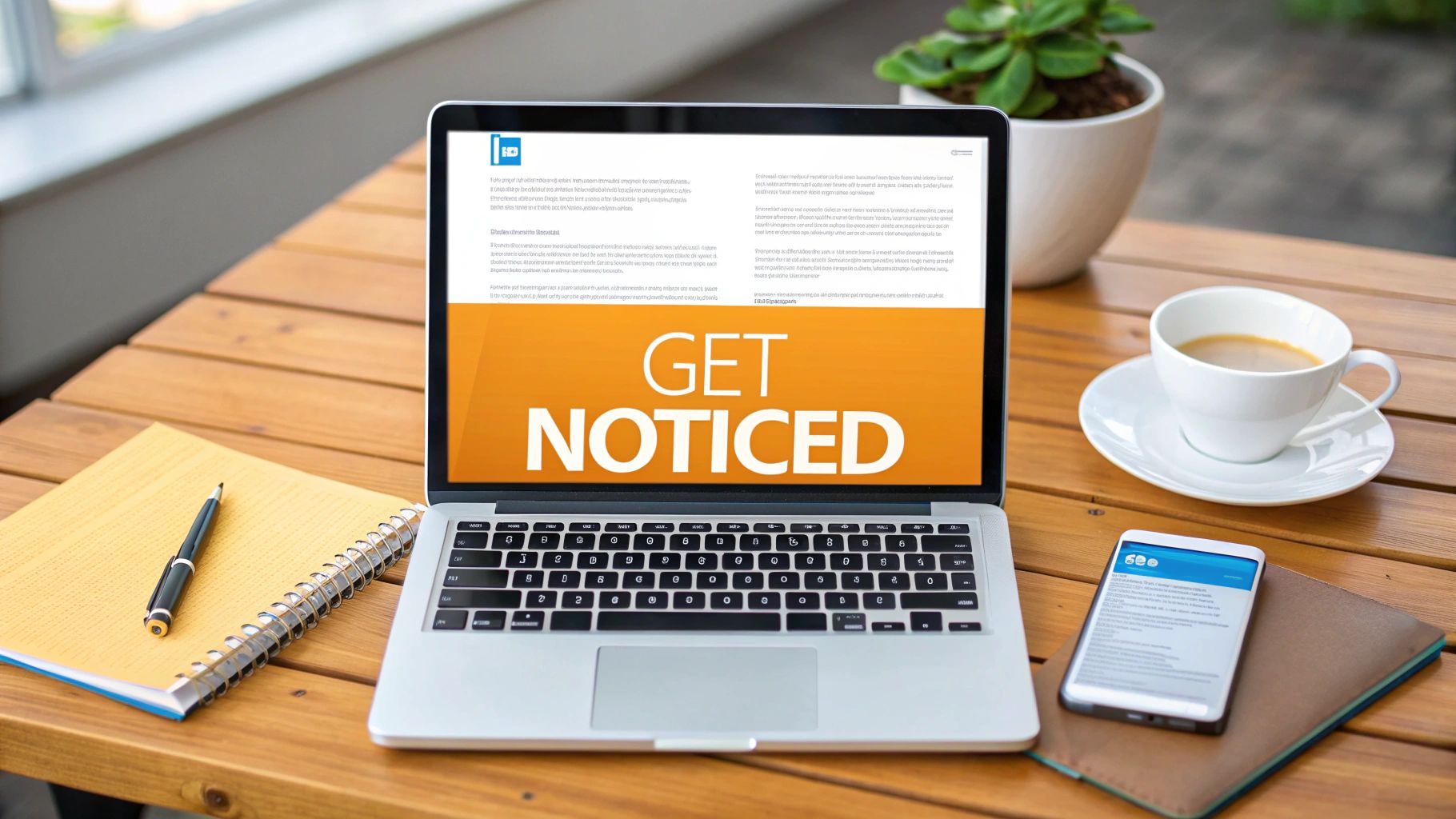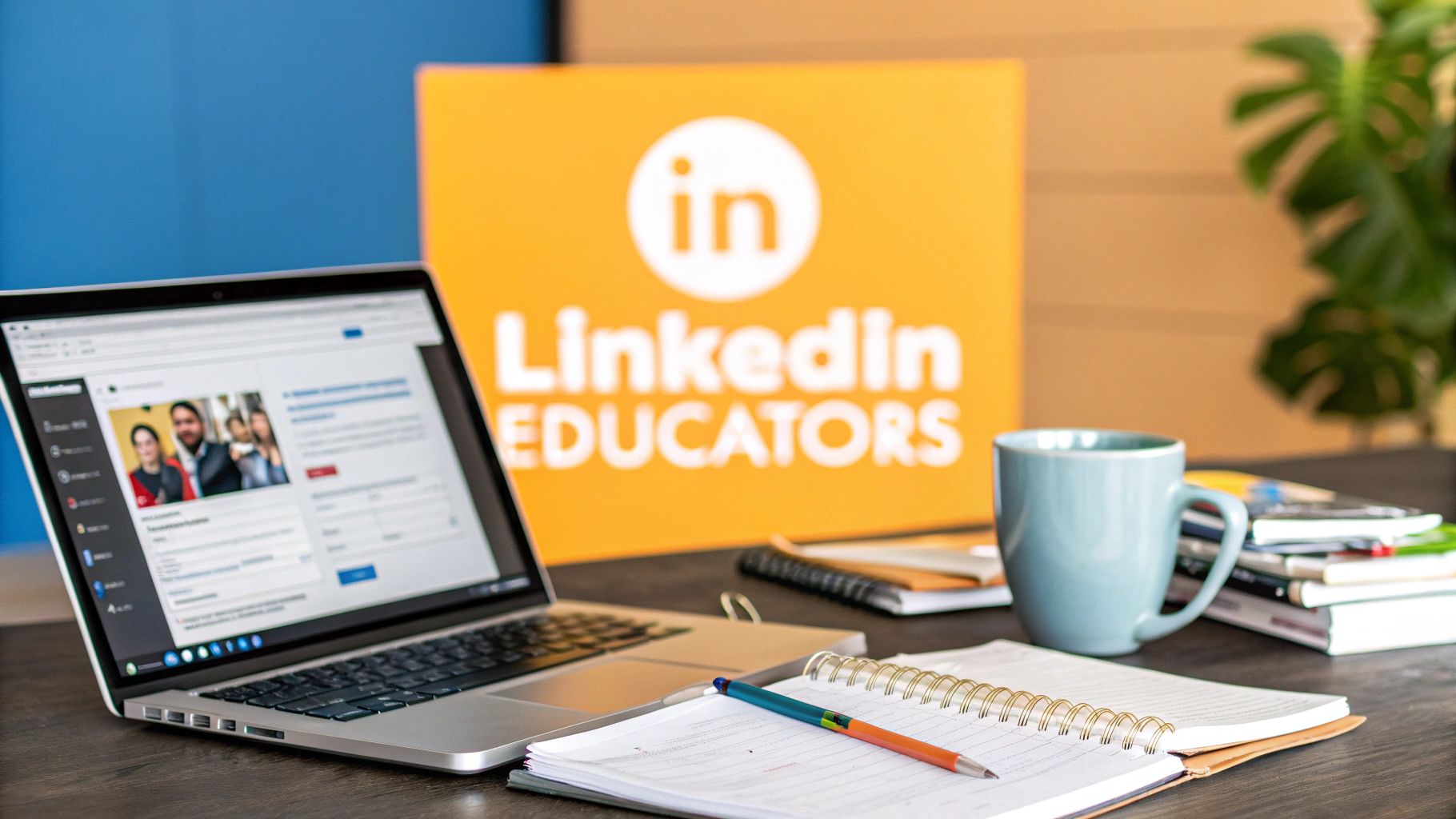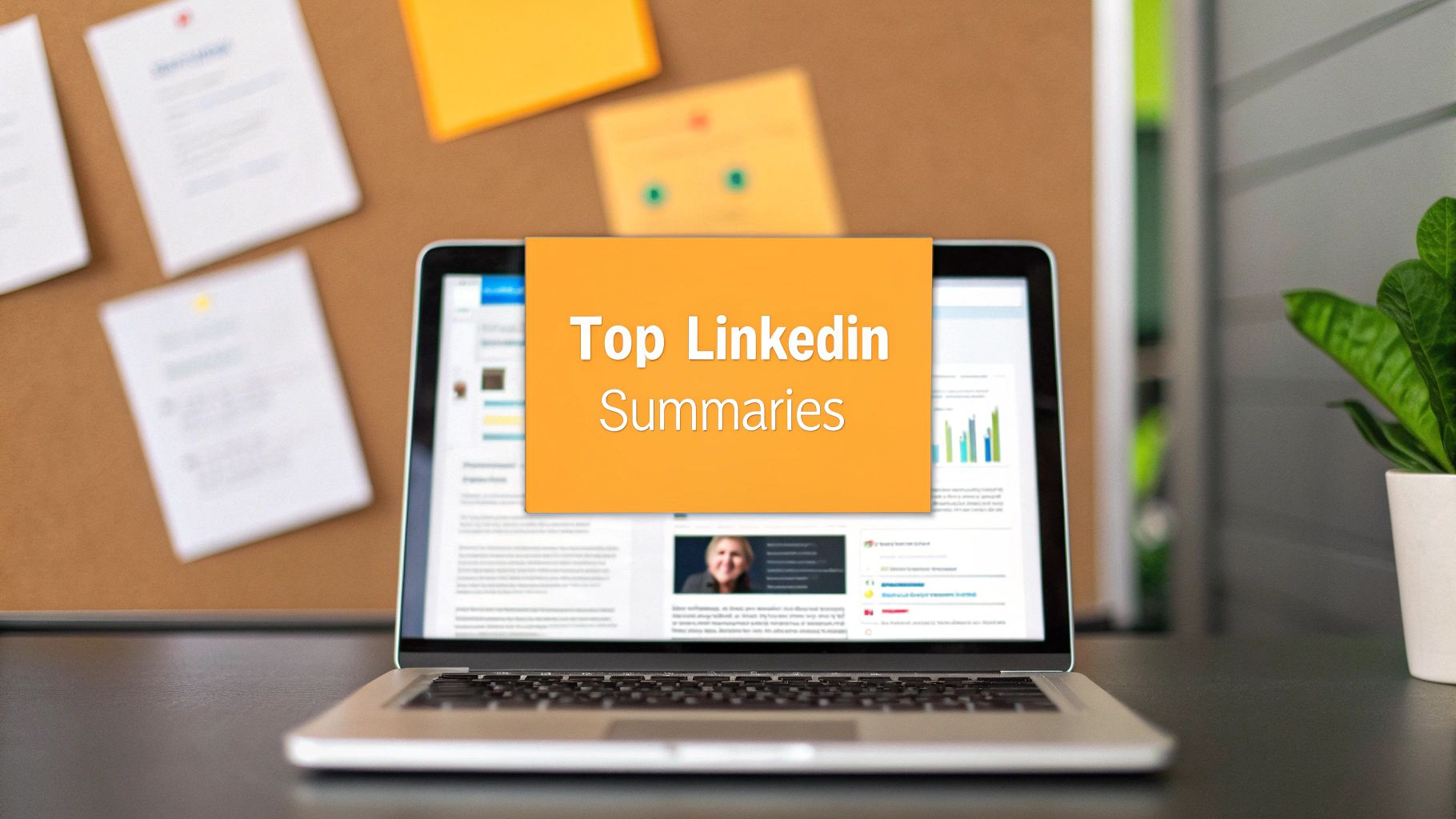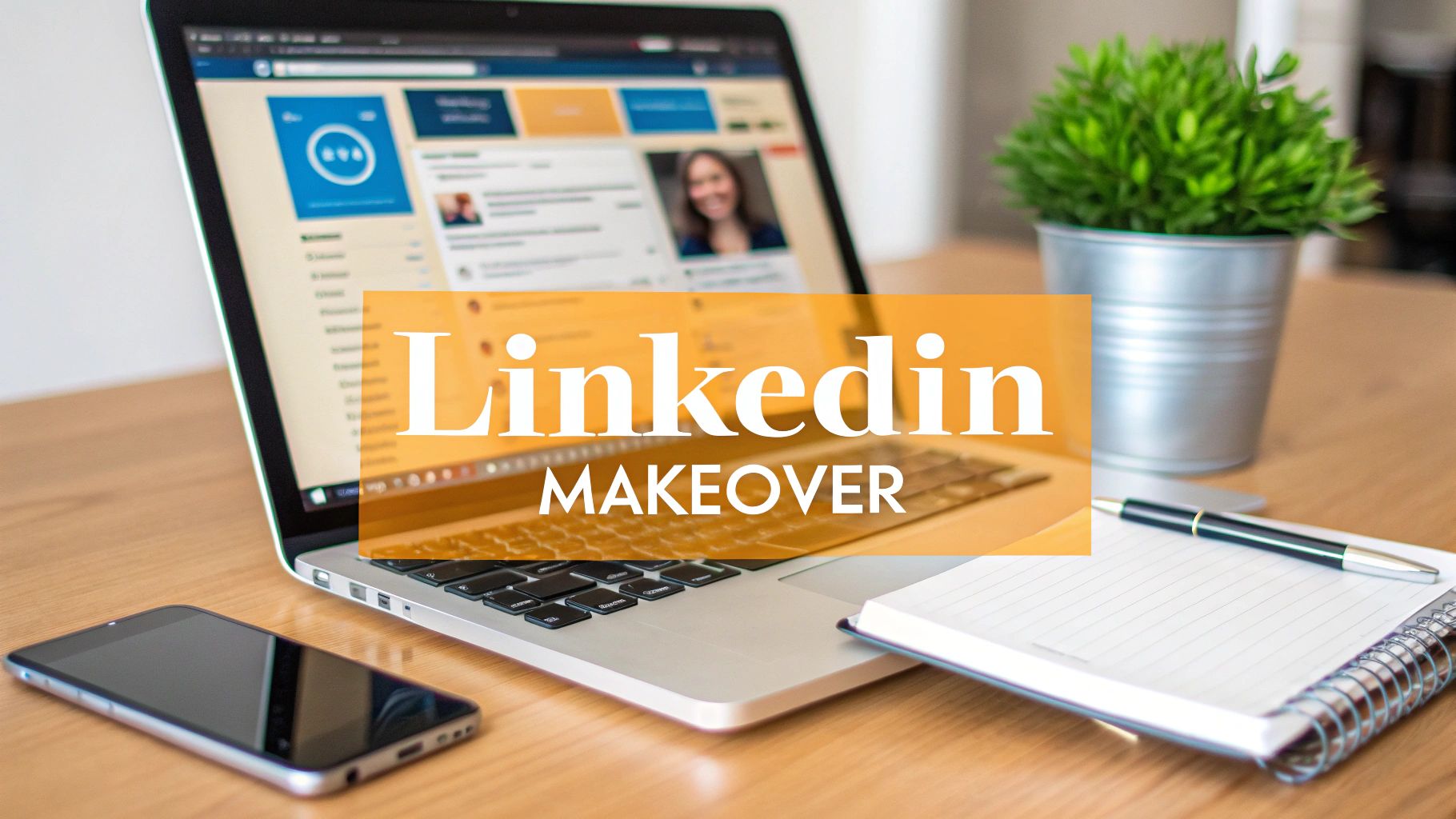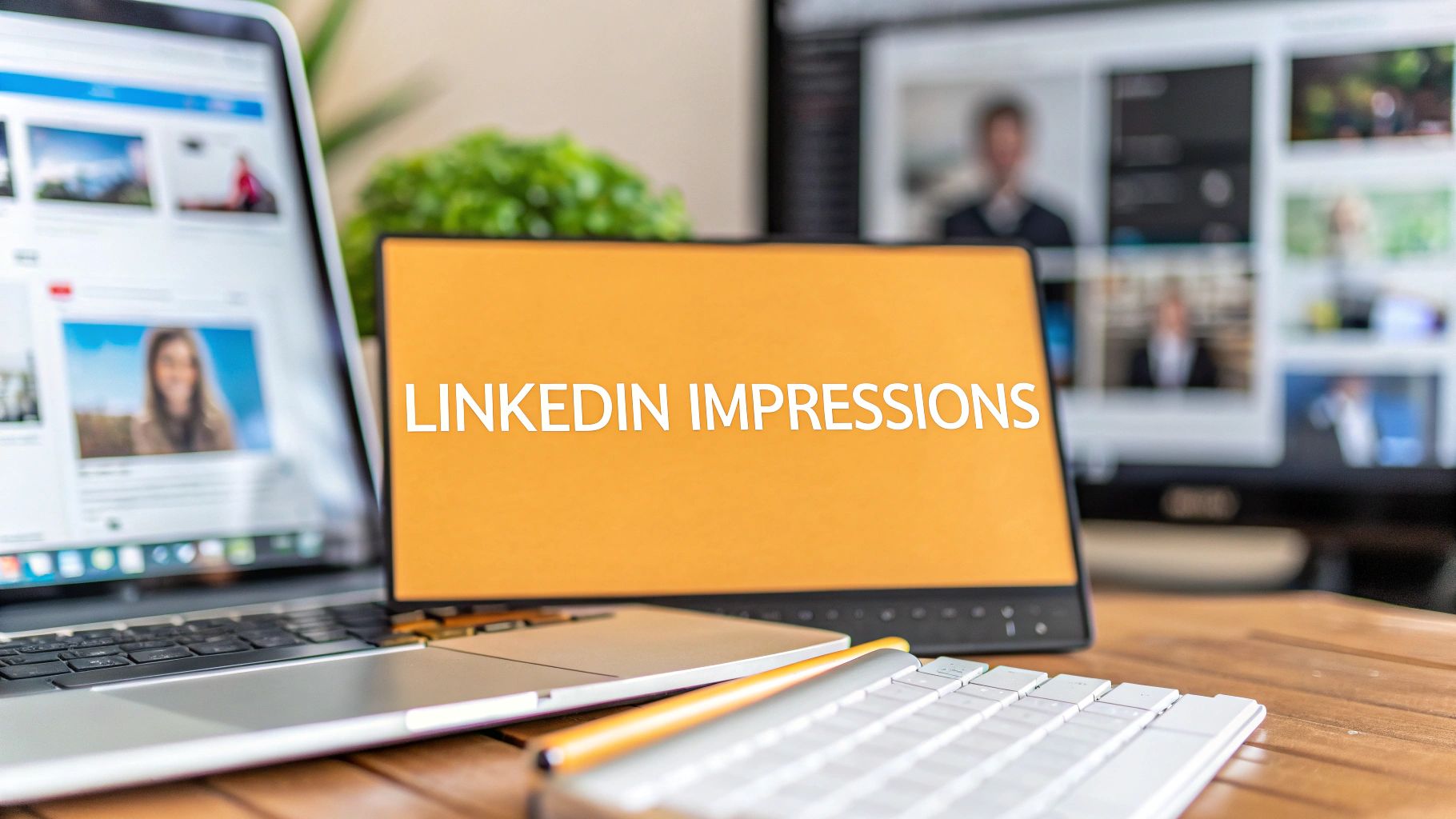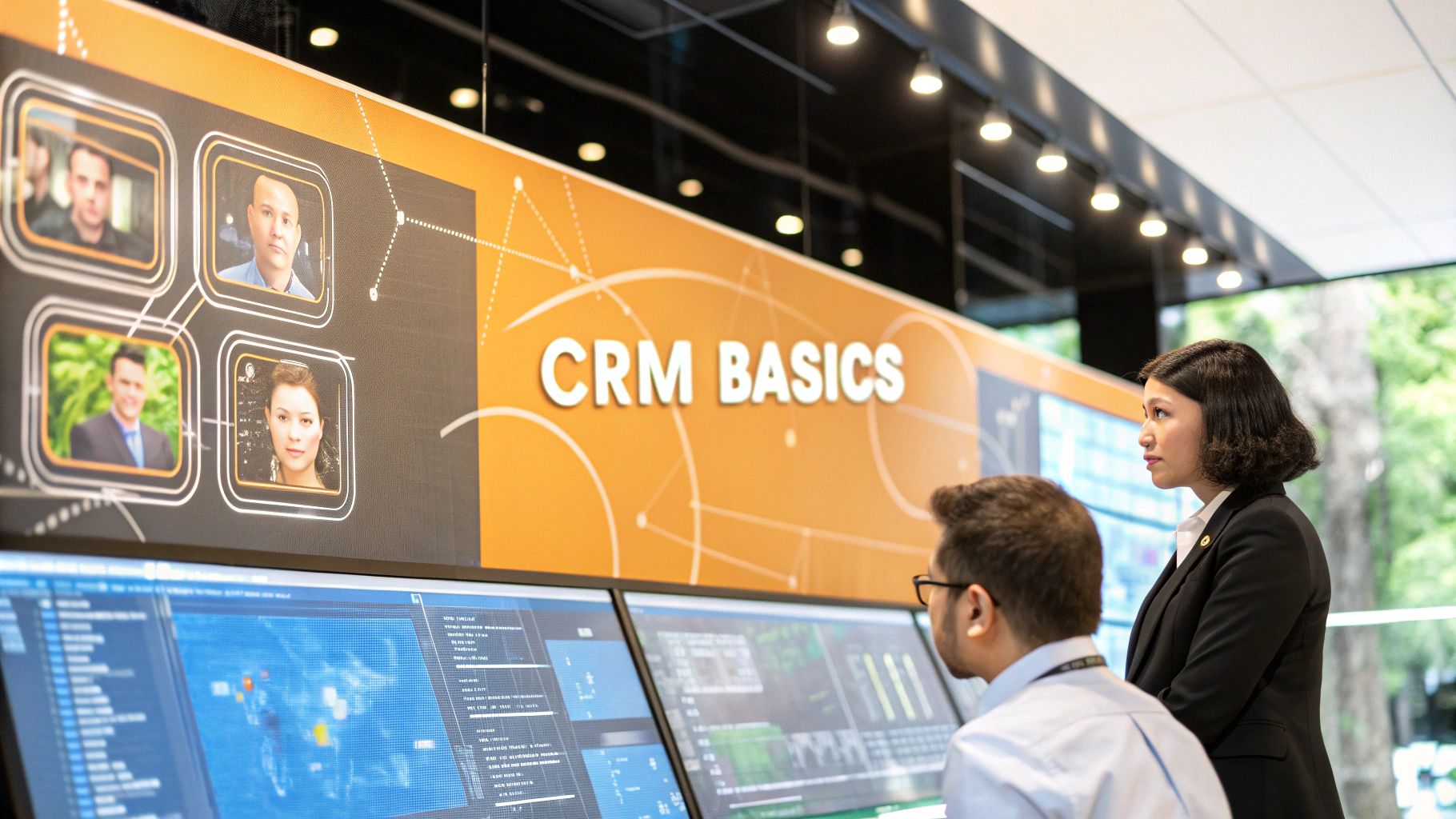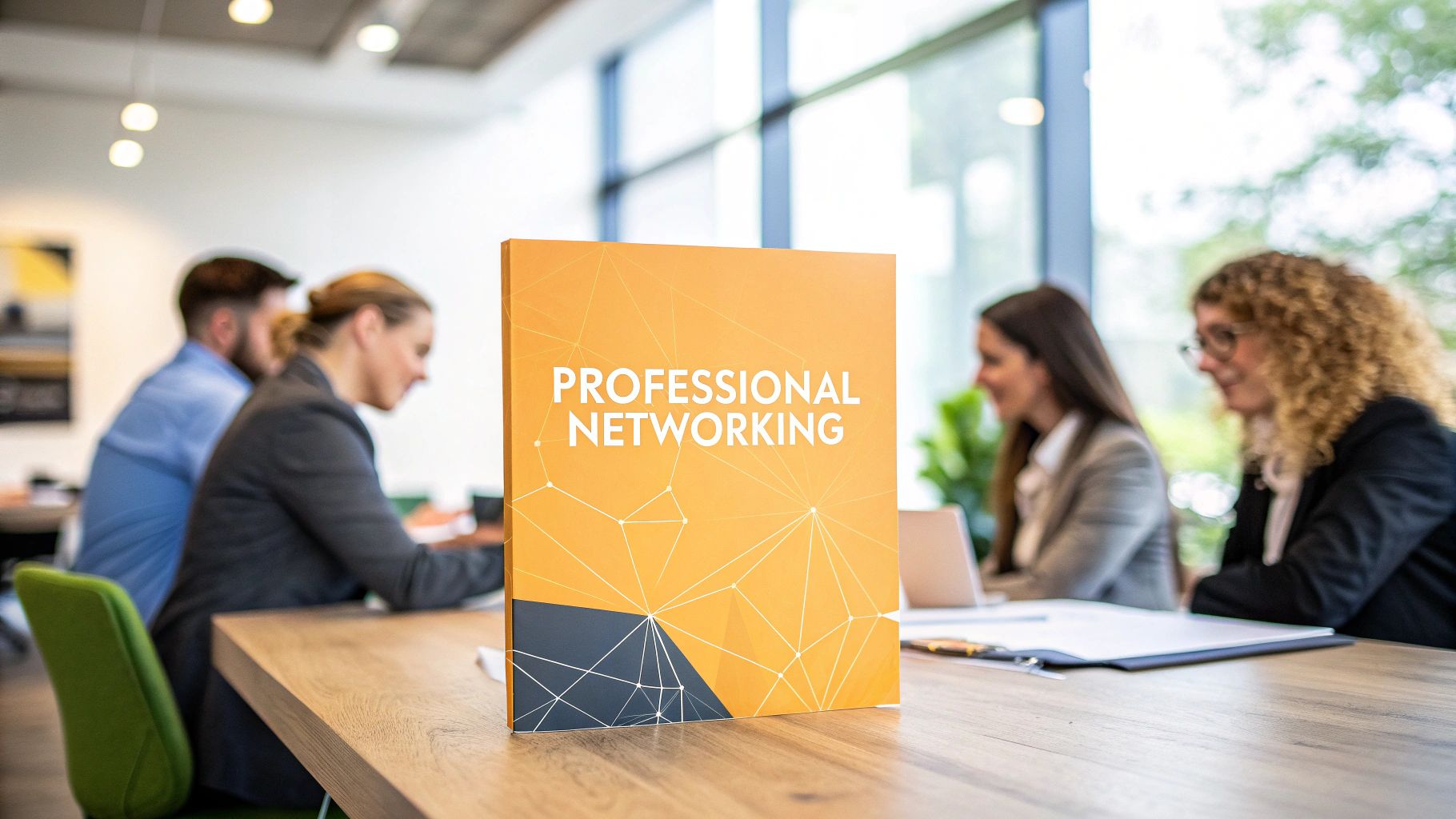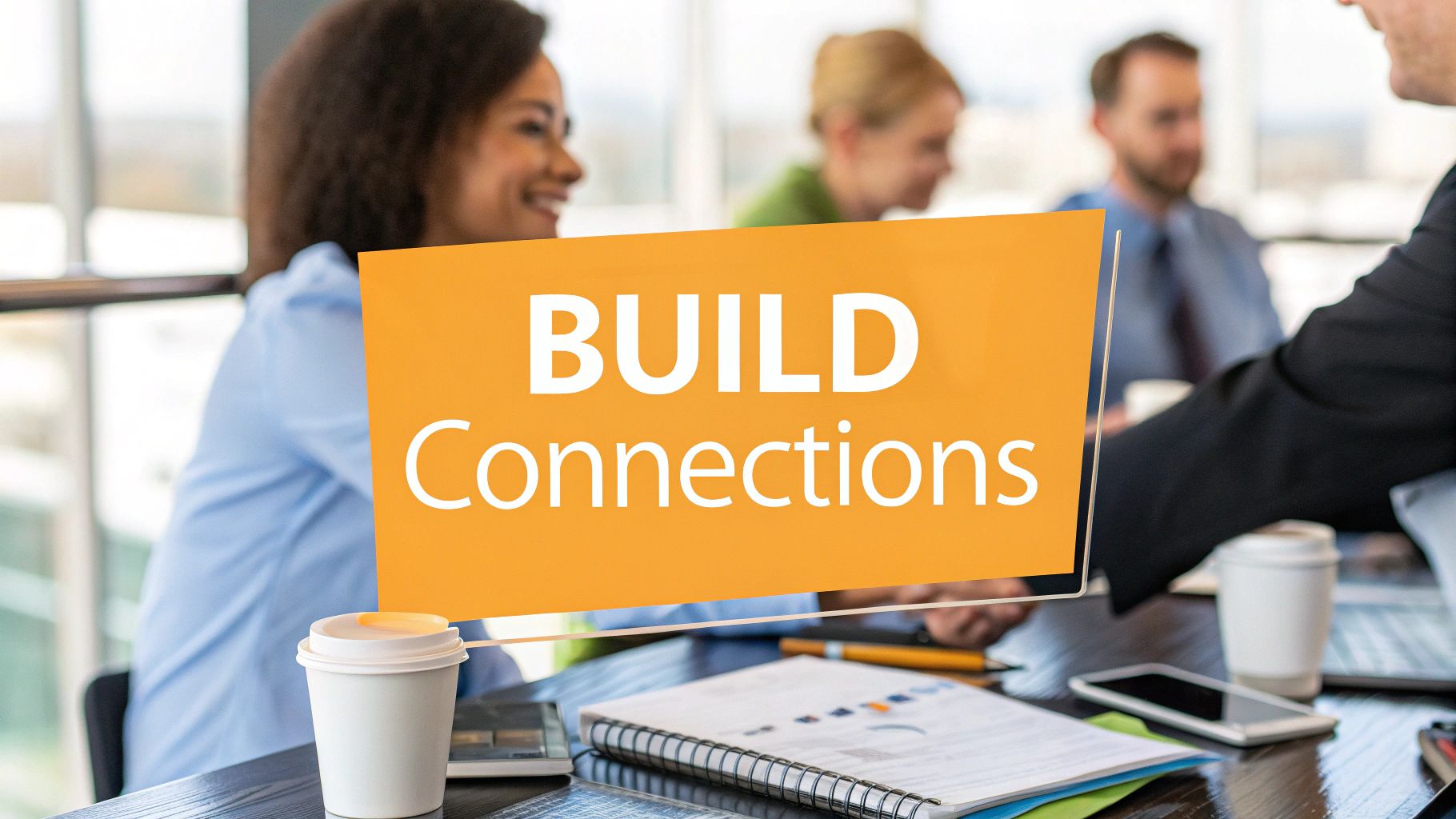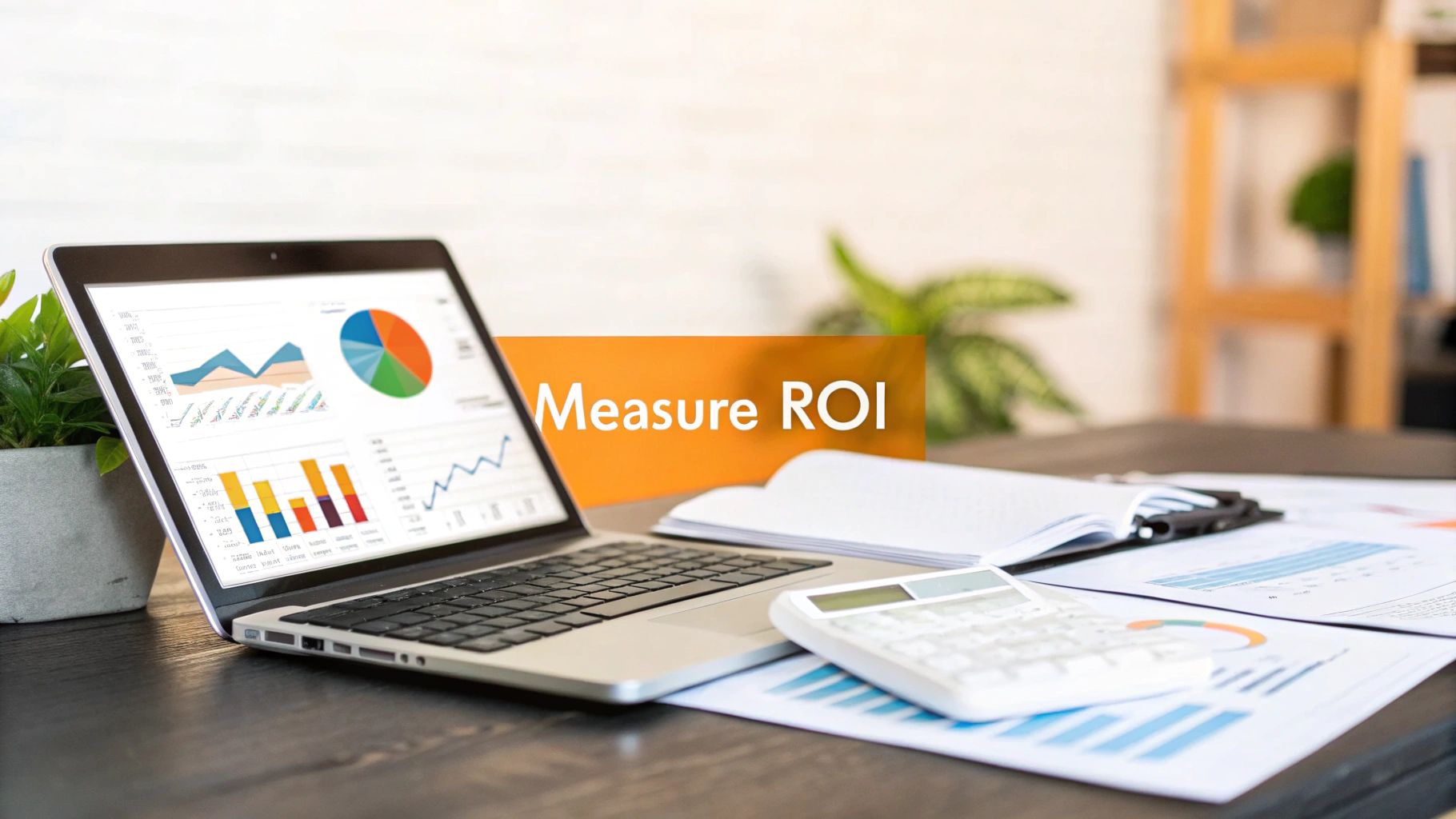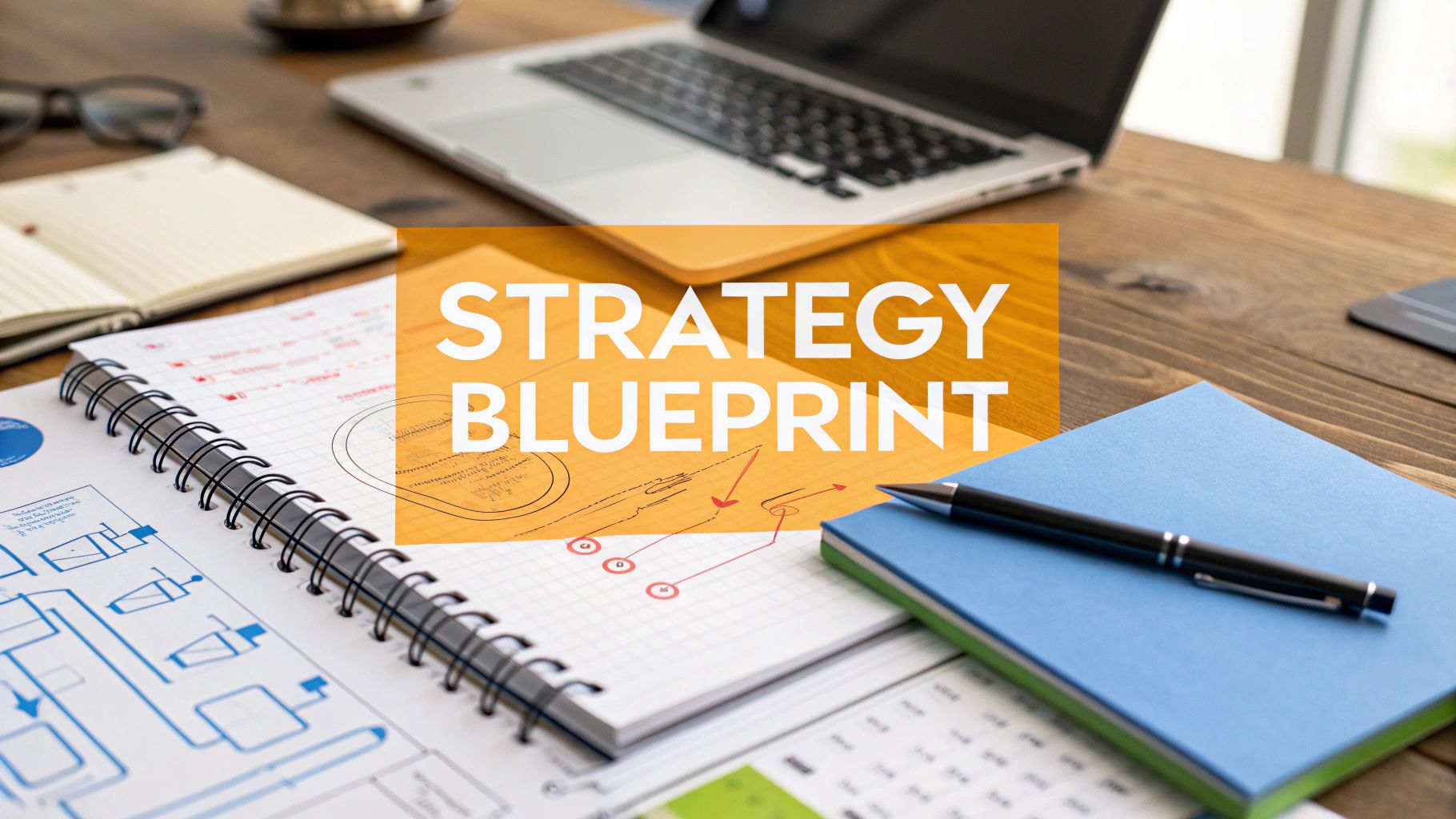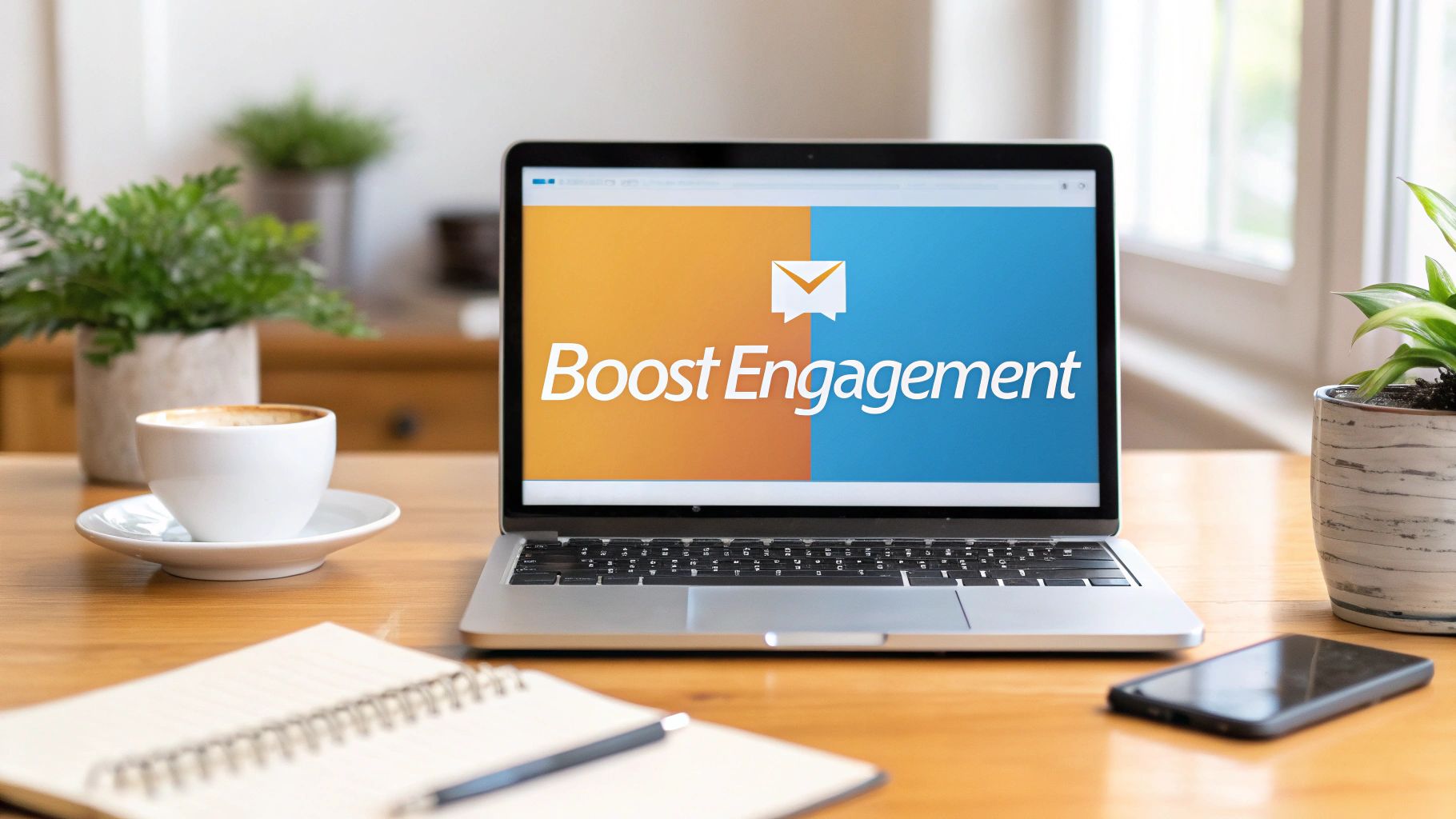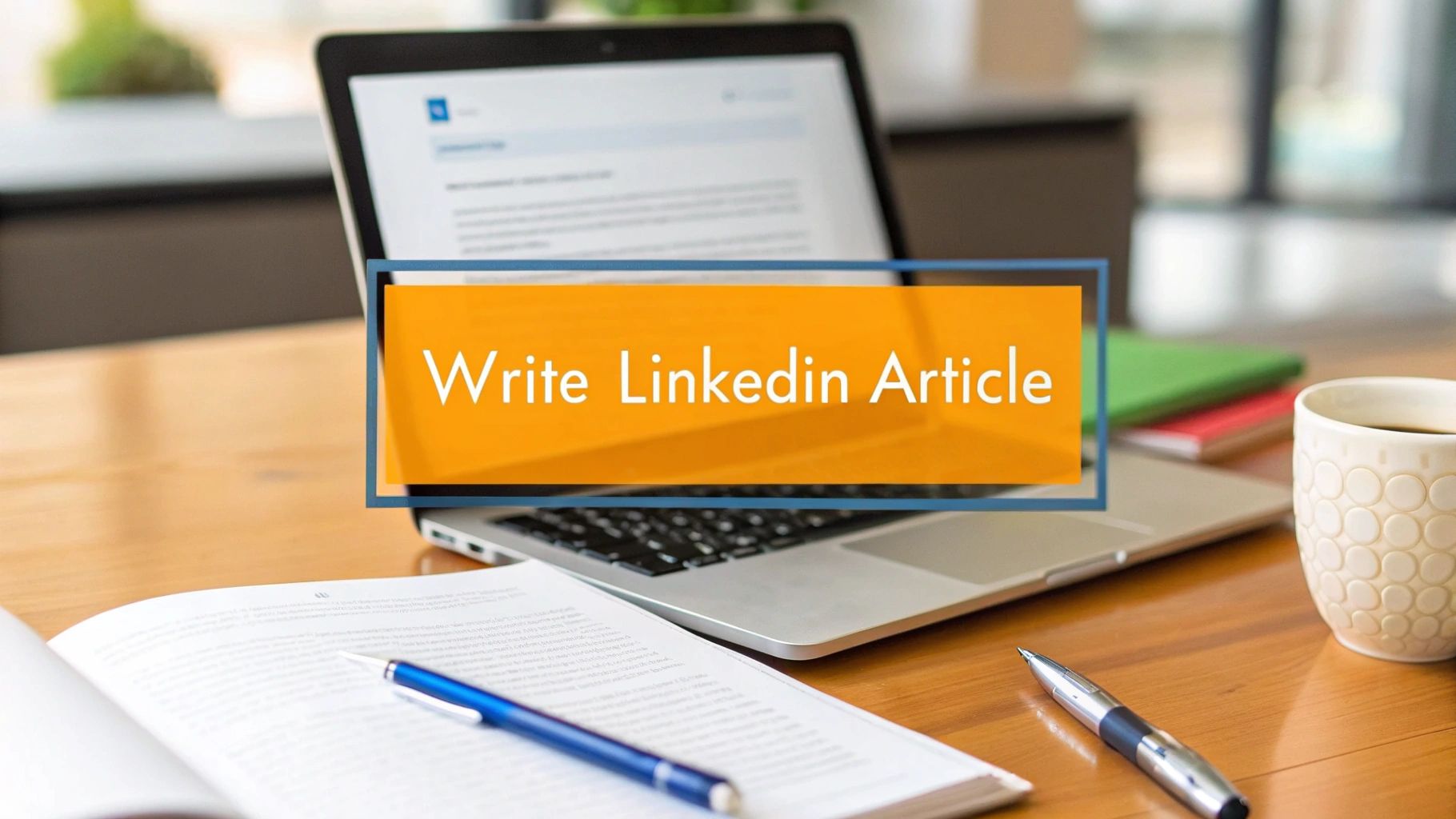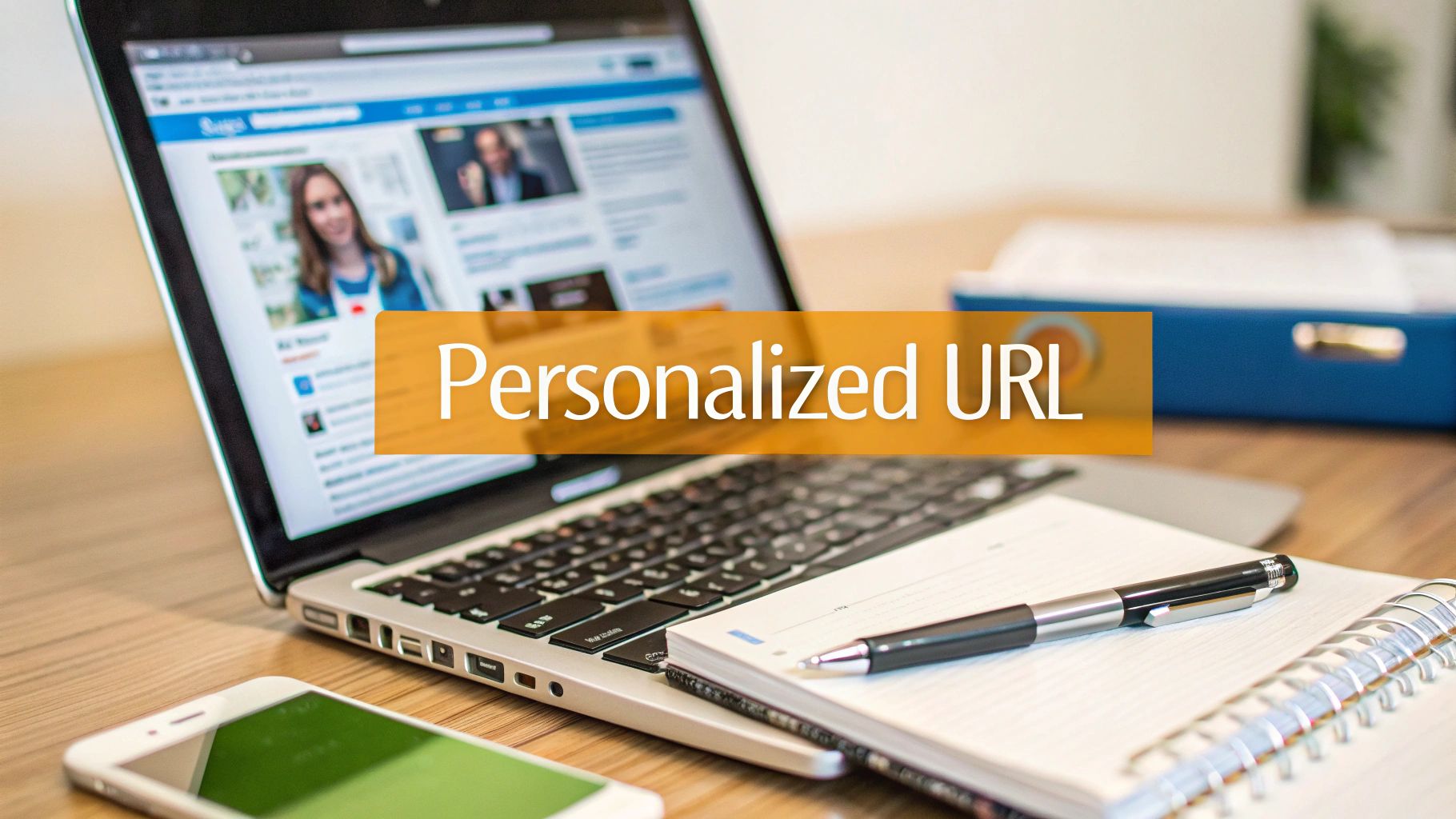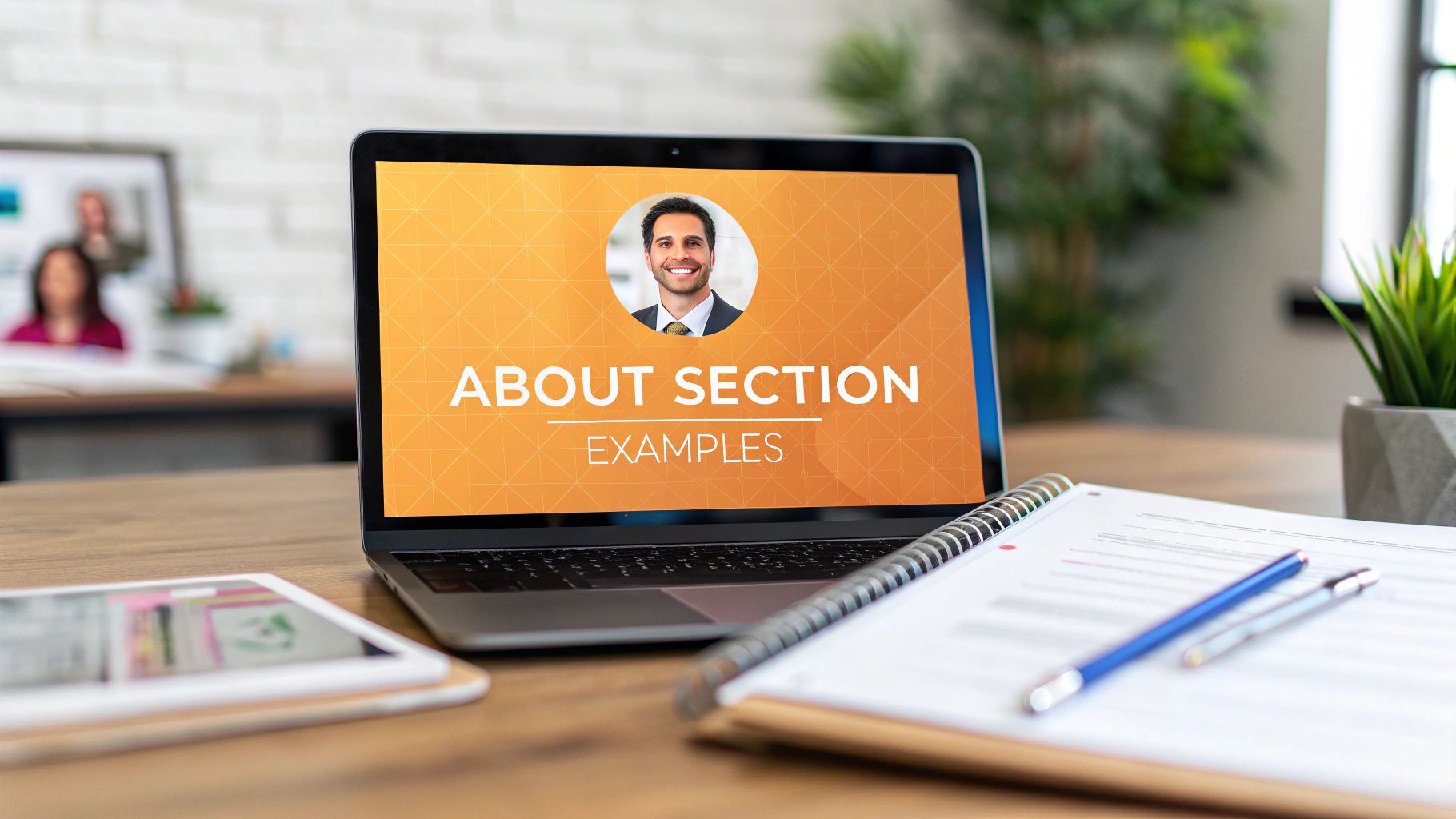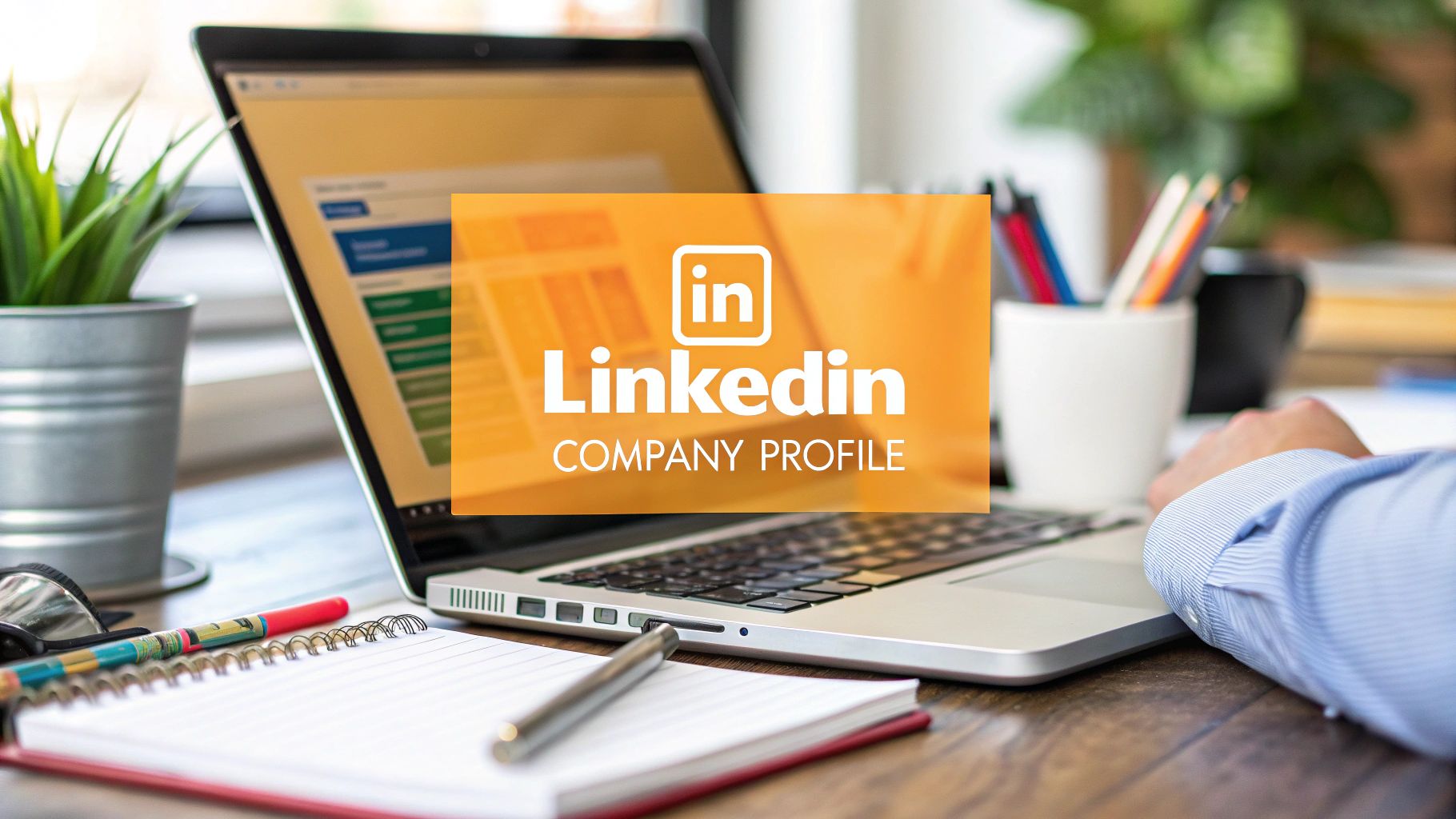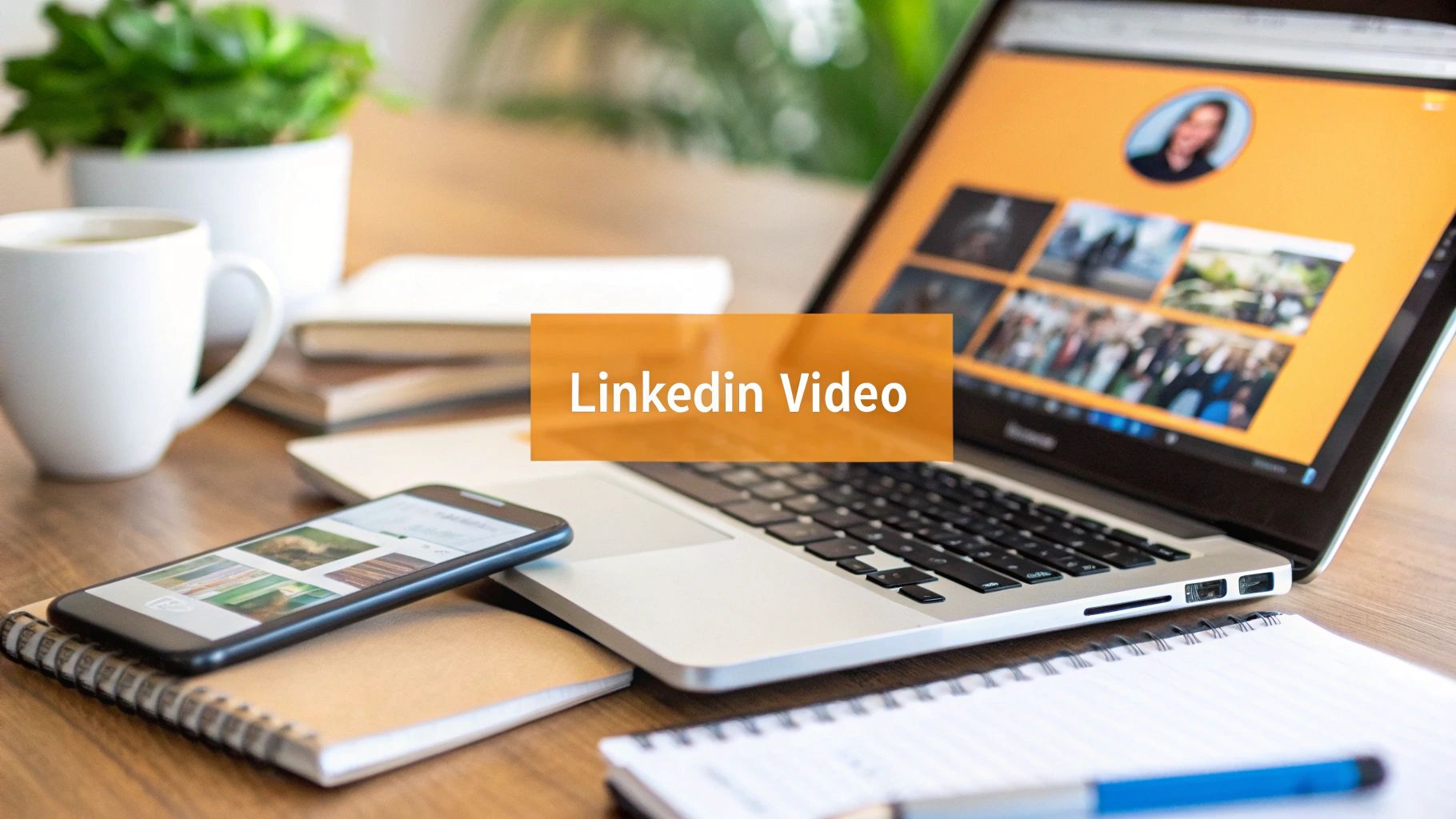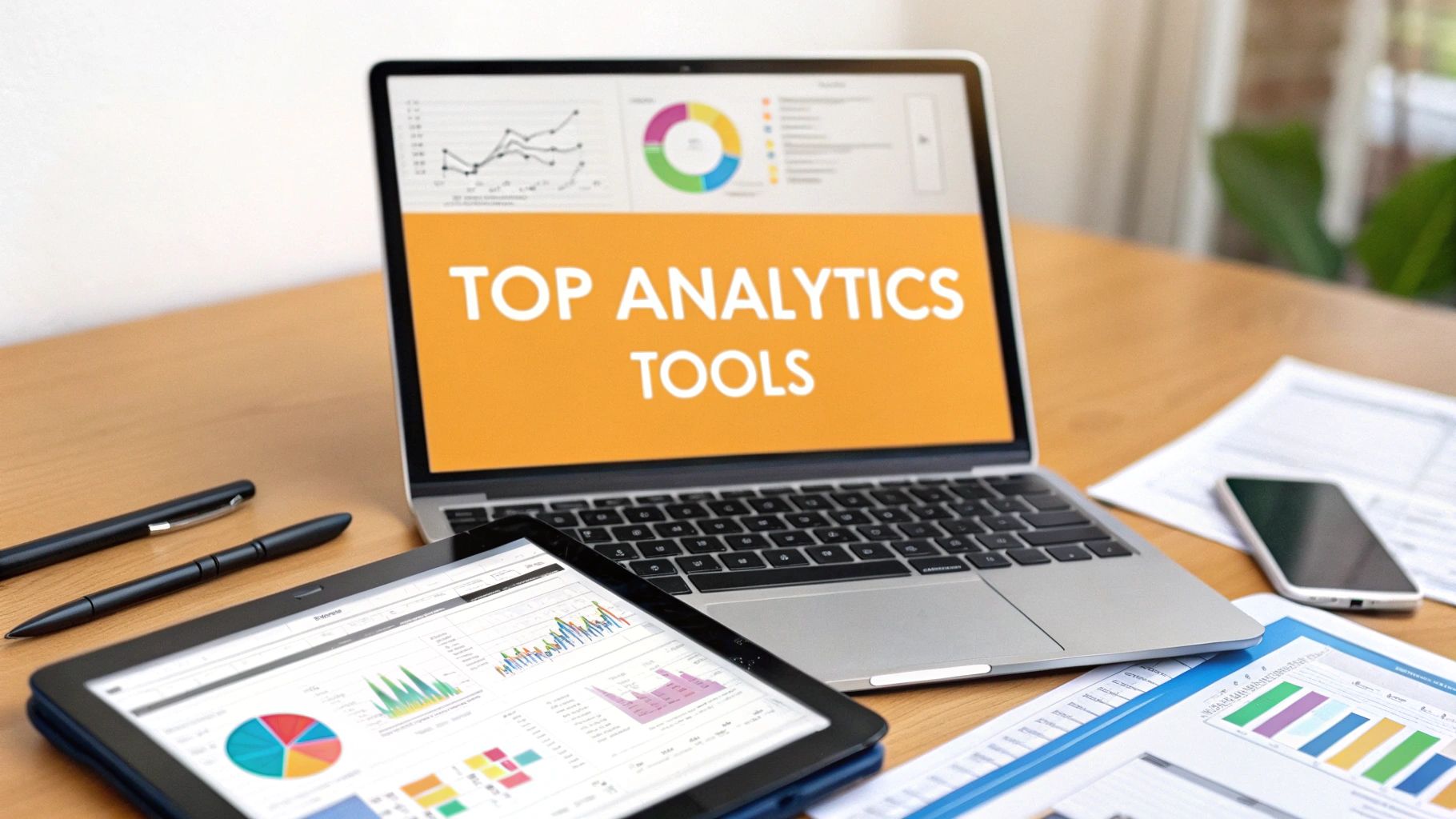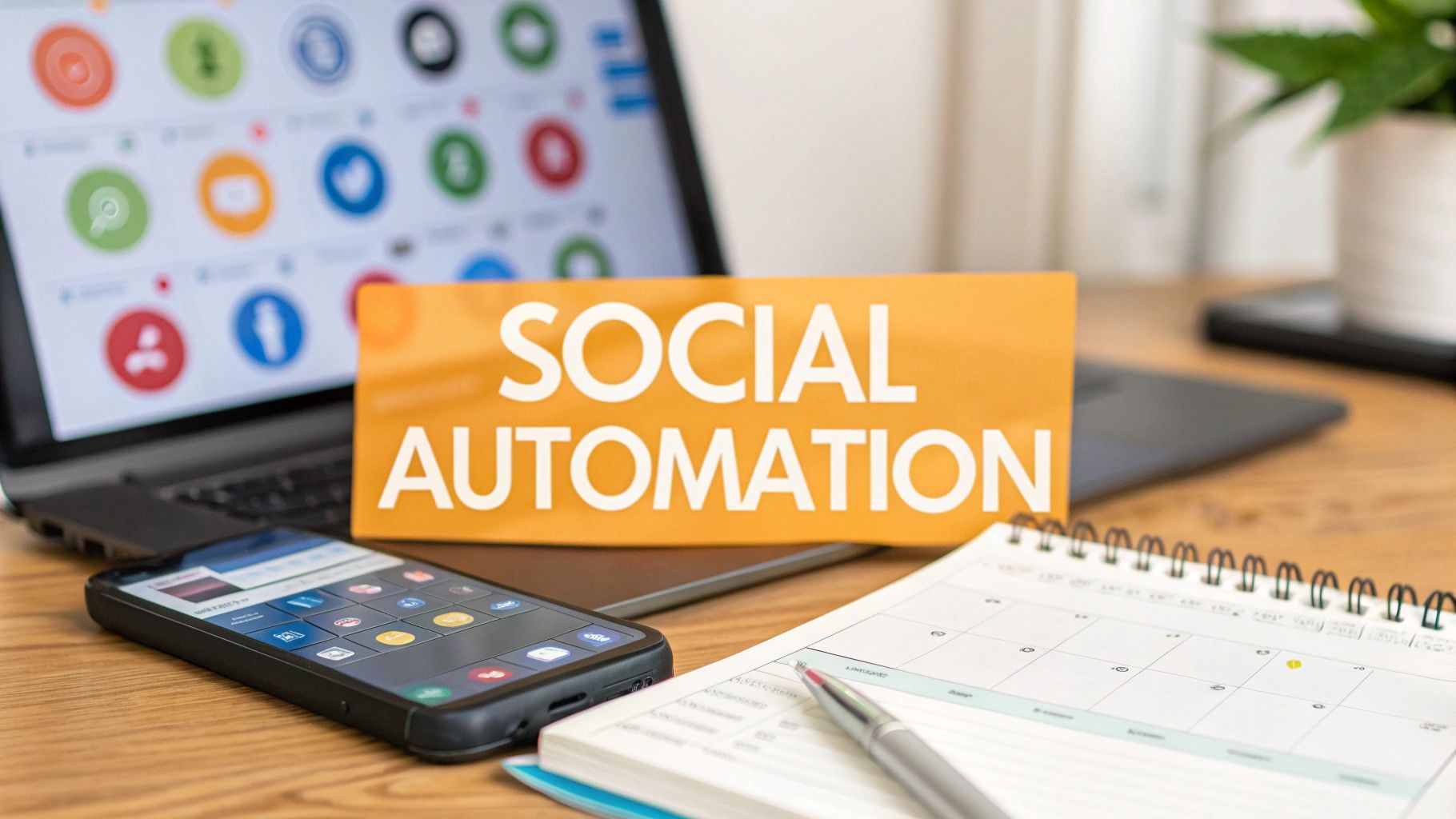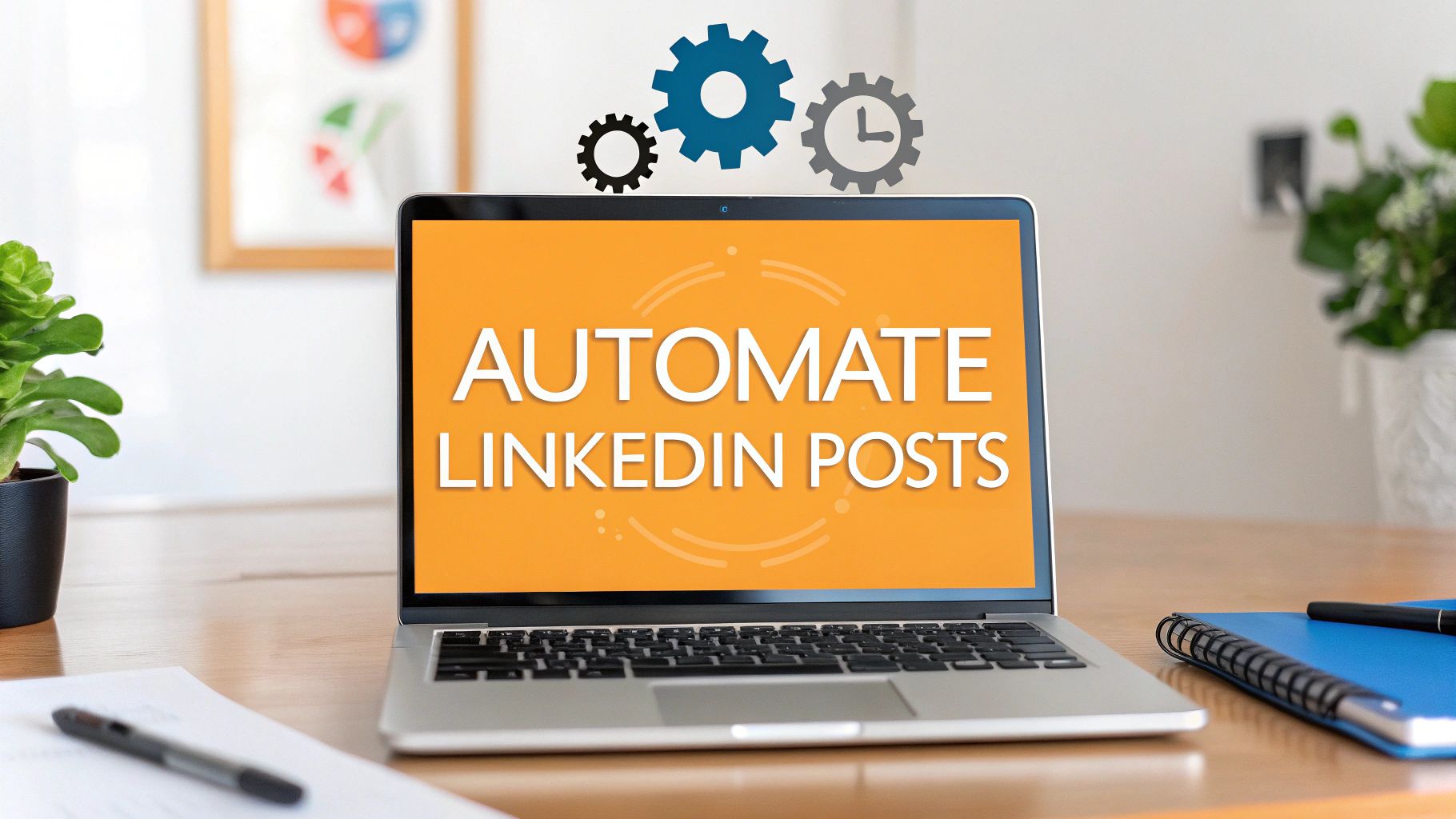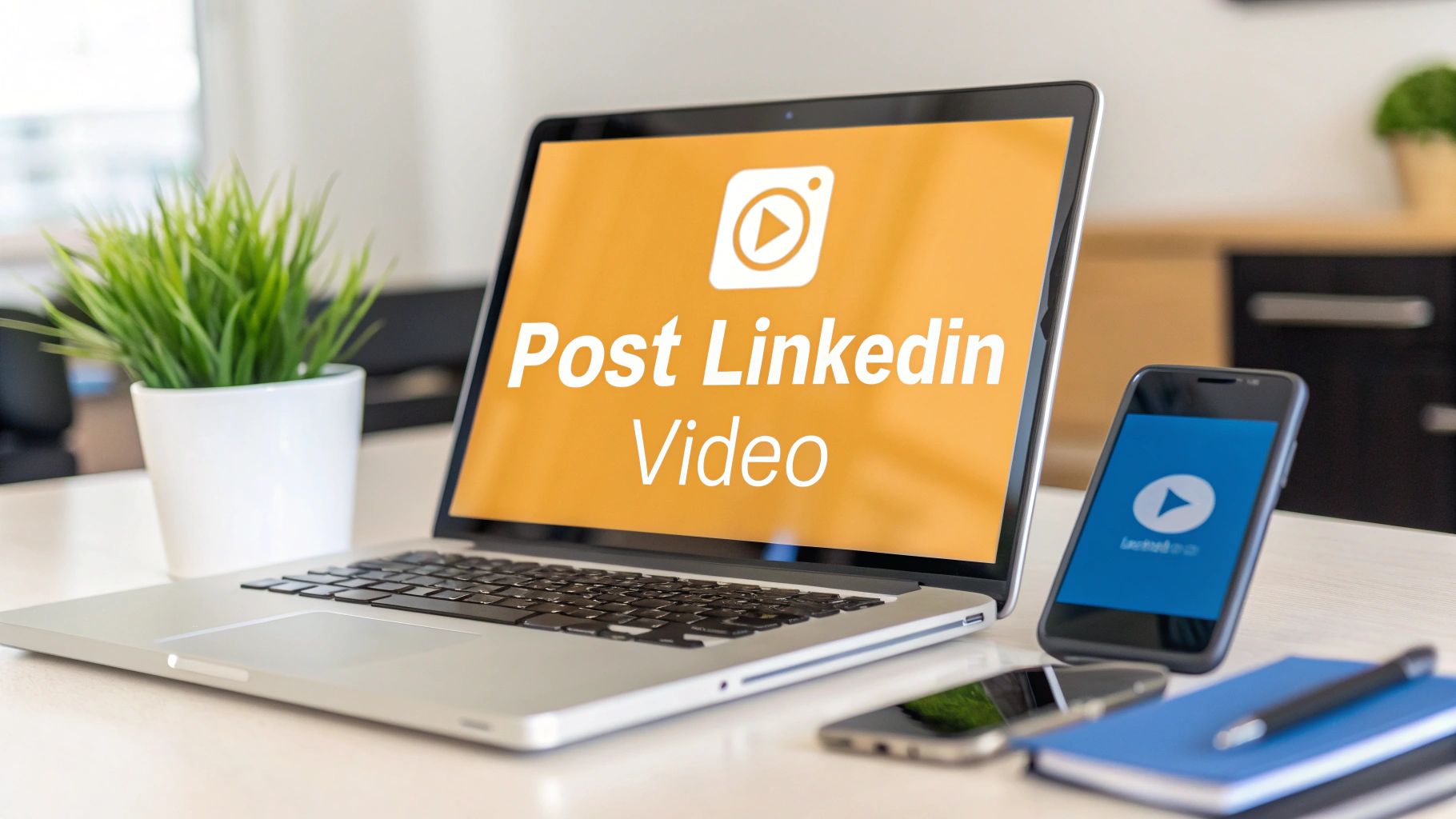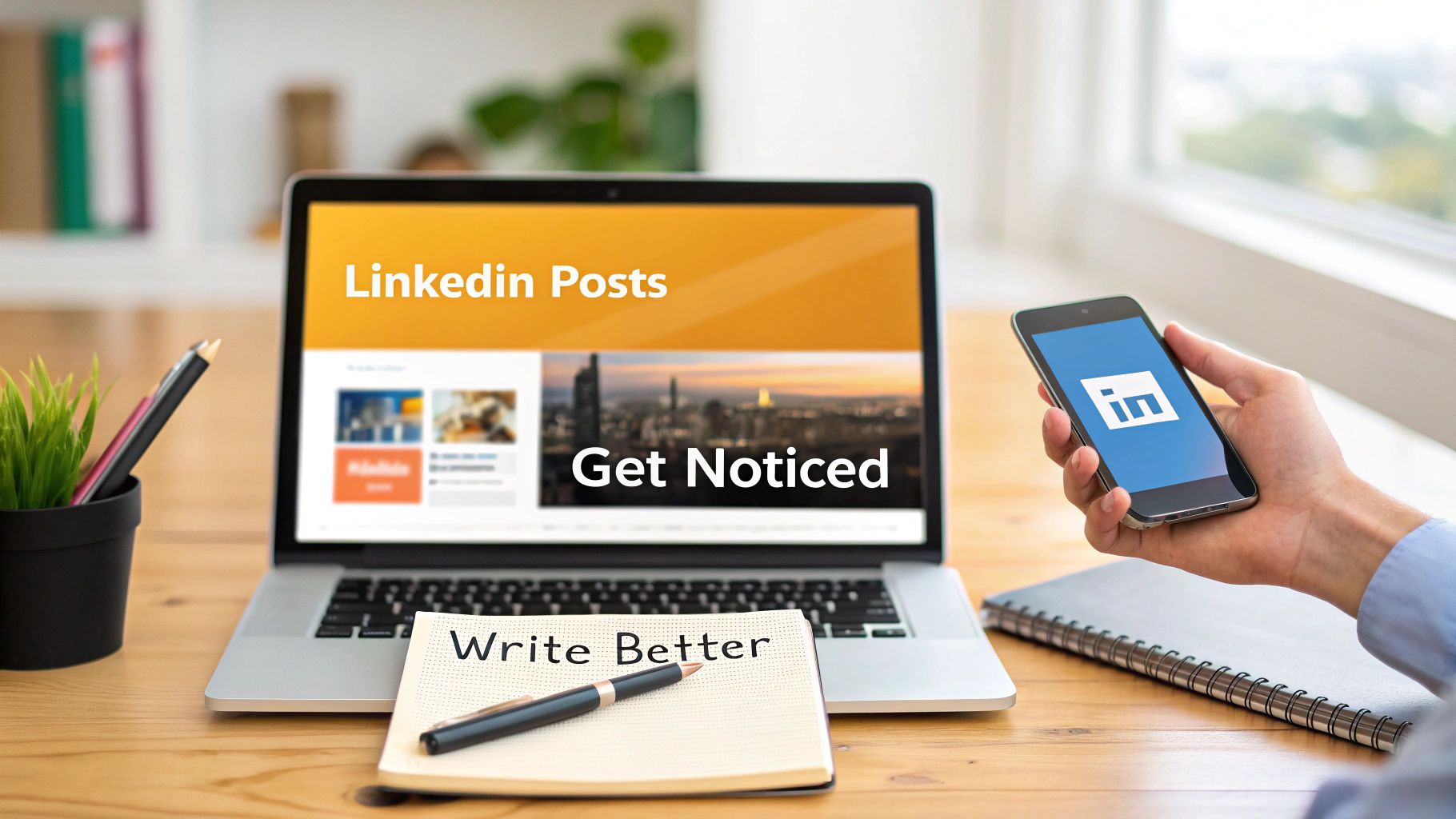Unlocking executive presence really comes down to three basics: gravitas, communication, and appearance. Think of this as your go-to playbook—simple shifts like striking a confident stance, leading with a magnetic question, or dialing in your look can change how people perceive you.
Get Your Executive Presence Roadmap

Treat this roadmap as a living guide you revisit every morning. Each habit ties to a quick drill—perfect for a pre-standup pep talk or a last-minute prep before a client pitch.
Start with a quick mirror check. Then hold a power pose for 30 seconds—it’s a small routine that packs a big confidence boost.
- Gravitas: Lock into a 30-second power stance before stepping into any high-stakes meeting.
- Communication: Open with a question like, “What excites you most about this project?”
- Appearance: Toss in a standout accessory or tweak your ring light so you look polished on video calls.
These little tweaks build momentum. Make them your go-to reminders before key conversations.
Executive Presence Action Summary
| Attribute | What To Do |
|---|---|
| Gravitas | Hold a 30-second power pose |
| Communication | Lead with a targeted conversation hook |
| Appearance | Add one visual detail (accessory or lighting tweak) |
Keep this table handy and mark off each action as you go. Small wins stack up fast.
As you put these habits into motion, you’ll want to also identify and rectify common pitfalls in executive presence.
Drill Examples
Here’s a 2-minute pre-meeting routine that covers all three pillars:
- Stand tall, breathe in for four counts, out for four counts.
- Craft a hook that ties your message directly to what matters most to your audience.
- Do a rapid mirror or webcam check for any last-minute style or lighting tweaks.
Lots of leaders swear by this combo. Run it consistently until these moves feel automatic.
Each evening, glance back at your roadmap and jot down what clicked and what needs tweaking. Make every adjustment feel true to you—authentic presence always outshines perfect form.
Understanding Key Attributes Of Executive Presence
Executives who master presence spark team alignment and motivate action with nuanced behaviors. It isn’t just surface polish—it tangibly speeds up your career growth.
Recent research shows that 26% of a leader’s promotion potential comes from presence skills—things like inspiring teams and coaching effectively. Read the full research about executive presence findings
That snapshot makes it clear: presence habits carry weight on par with technical know-how when promotion discussions happen.
Common Presence Rituals
Trust often builds through small, consistent actions. Picture kicking off every meeting with a concise agenda. Or pausing just long enough for your key point to land. These simple moves broadcast readiness and authority.
- Consistent Meeting Openers that set clear outcomes
- Deliberate Pauses to eliminate “um” and “uh”
- Engaging Eye Contact to forge genuine connections
Consistency in small gestures can amplify how others perceive your leadership presence.
Over time, these rituals become second nature—so you walk into any high-stakes conversation with built-in credibility.
Overcoming Presence Pitfalls
Even seasoned leaders stumble—maybe you pepper your speech with filler words or shy away from direct eye contact. Spotting these patterns is step zero toward fixing them.
- Record a 5-minute talk and highlight your filler words
- Drill steady eye contact with a peer via video calls
- Ask a colleague to note your nonverbal signals and share honest feedback
Underrepresented leaders face extra scrutiny around presence. Voice coaching or finding a sponsor can help level the playing field.
That brings us to confidence: whether you’re leading a big pitch or a quick huddle, owning your room matters. For tactics on this, see leading with confidence.
Hungry for more credibility boosters? Dive into our guide on earning expertise: How to Become a Subject Matter Expert
Tracking Presence Progress
After each meeting, jot down two wins and one area to tighten up. It sounds simple, but it works.
- Rate your eye contact on a 1 to 5 scale
- Count filler words per 100 words of speech
- Log your use of confidence triggers, like power poses
Pair these metrics with a quick peer-check: one compliment, one tweak. Before you know it, you’ll have a “presence dashboard” that tells you exactly what to refine.
Consistent measurement transforms vague goals into clear outcomes.
Next Steps For Presence
Now that you’ve seen the core attributes and common stumbles, commit to micro-habits today. Start with a two-minute mirror drill and map out your meeting openers.
Real growth in executive presence springs from daily practice, honest feedback, and self-reflection. Keep each action authentic to your style.
Combine these strategies, and you’ll notice promotions and team buy-in following close behind. Soon, you’ll move on to mastering gravitas when stakes are highest.
Stay on top of your progress, tweak your routine, and celebrate even minor wins. Over weeks, small shifts solidify into powerful presence habits—fueling your leadership impact.
Embrace these techniques as part of your go-to playbook, and watch your career trajectory pick up speed.
Cultivate Gravitas Through Powerful Presence
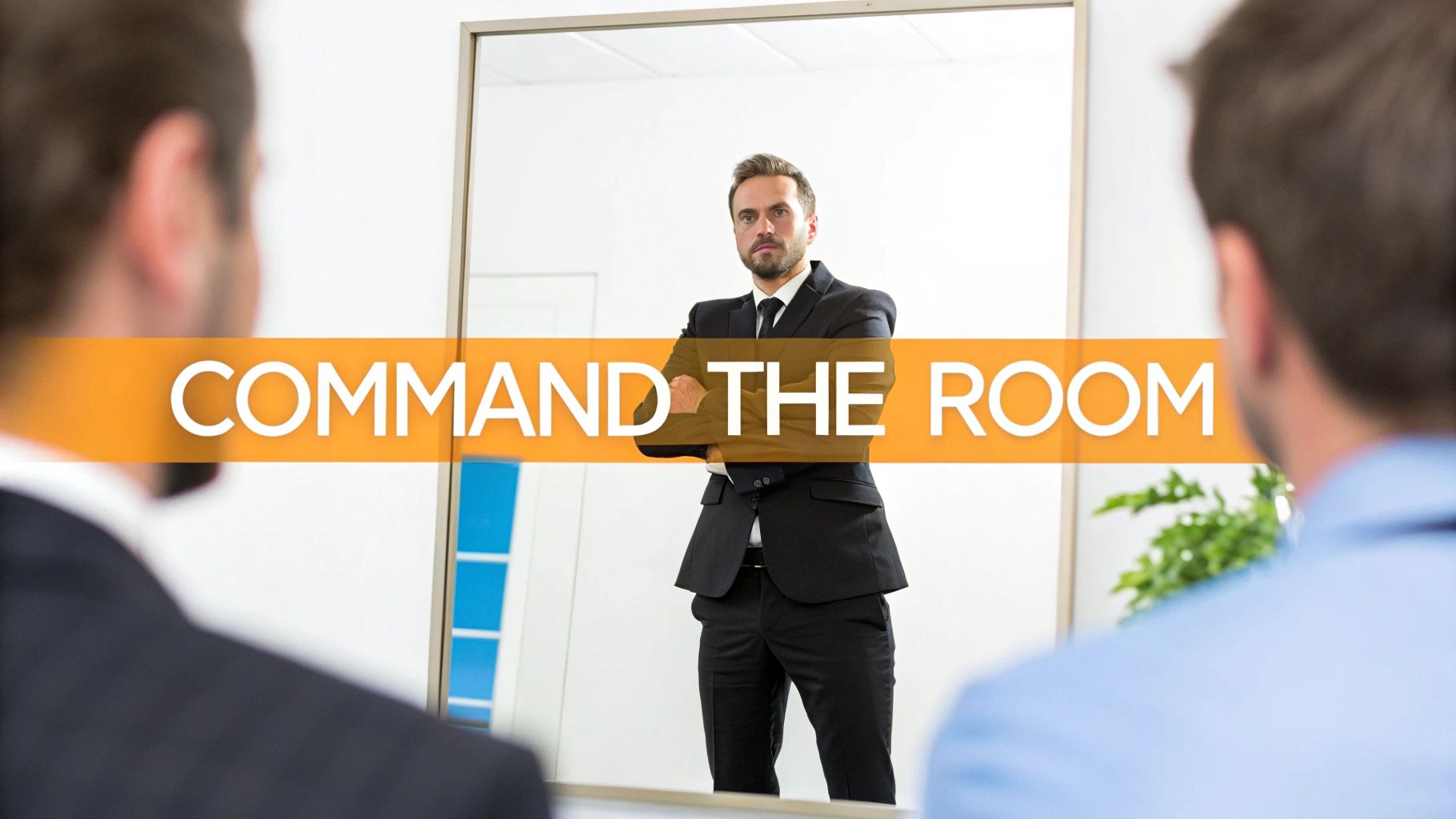
Gravitas isn’t just a buzzword—it’s that calm command you radiate when things get intense. A CEO friend of mine swears by striking a power pose moments before every board update—it instantly roots him in confidence. And a VP I worked with ran her opening spiel in her head so often she slashed jitters by 40%.
- Quick mirror checks reveal sloppy posture in real time.
- A deliberate pause amplifies your key points.
- Varying your pace flexes your decisiveness muscle.
Turn these habits into daily rituals and that composed authority becomes almost automatic. Just remember: pairing that weight with genuine warmth—through stories that resonate—makes you unforgettable.
Powerful Posture Drills
Posture isn’t flashy, but it packs a punch in presence-building.
Try this:
• Stand feet hip-width apart, shoulders back—hold for 60 seconds.
• Lean your back against a flat wall to lock in alignment.
| Drill | Benefit |
|---|---|
| Power Pose | Immediate confidence boost |
| Wall Press | Perfect shoulder alignment |
| Mirror Stance | Heightened self-awareness |
Keep this table handy. Pick one drill and weave it into your routine—pre-meeting, at your desk, even before grabbing coffee.
Case Study Of Mental Rehearsal
Imagine a VP gearing up for a high-stakes board pitch. She closed her eyes, visualized every question, then rehearsed her answers aloud. The result? Stress levels dropped by 50%, and her opening felt impossibly smooth.
- Envision each segment of your talk in vivid detail.
- Whisper your key phrases until they flow naturally.
- Record yourself and flag any tension spots.
Concrete examples like this turn abstract drills into actions you can actually apply.
Storytelling Frameworks That Connect
Facts inform—but stories inspire. Anchor your message in a personal challenge you overcame, and you’ll forge an instant bond.
“Simple rehearsals build the muscle for confident delivery under any pressure.”
- Structure your tale with a clear beginning, middle, and end.
- Sprinkle in specific details—names, numbers, unexpected twists.
- Pause after your pivotal lines so they truly sink in.
Voice Modulation Exercises
Your voice is your most powerful tool. A leader I coached dialed back his speed on big statements—and saw heads nod twice as often.
- Raise your pitch ever so slightly on critical words.
- Let moments of silence follow bold claims.
- Eliminate “upspeak” by ending sentences with purpose.
These tweaks layer on gravitas and help you steer any conversation.
Daily Mirror Drill
Every morning, stand in front of a mirror for 90 seconds. Feet planted, shoulders back, breath steady.
- Spot any slouching and correct it immediately.
This micro-habit primes you to bring powerful presence into every interaction. Over time, it becomes second nature—gravitas on autopilot.
Enhance Communication To Command Attention

You want executives to lean in from the first word. Lead with benefits, then dive into features. That simple switch hooks them immediately on the impact you’re promising.
I once watched a seasoned tech leader turn dry figures into a mini-narrative—showing how the team’s efforts drove growth and hit deliverables. It went from “These are our numbers” to “Here’s why those numbers matter.”
- Benefit Lead: Opens with the upside to grab attention.
- Feature Details: Follows up with evidence and specifics.
- Engaging Hook: Bridges logic and emotion to keep people invested.
Active listening is your secret weapon. A quick nod or a thoughtful rephrase tells everyone you really care about their point of view. In a recent workshop, this small shift lifted a director’s session retention by 40%.
Before any big talk, run it by a peer. Ask them to play your toughest audience and call out gaps or jargon. Better yet, hit record on your phone—instant feedback on tone and pacing.
Refine Your Elevator Pitch
Kick off with a crisp problem statement. Tie in a result—say, boosting revenue by 25%—to build instant credibility. Then close with a prompt for next steps or feedback.
Quick Checklist Before You Launch:
- Does it highlight a clear benefit?
- Have you ditched industry jargon for plain language?
- Can you say it in under 30 seconds?
Visuals can turn complicated data into an easy-to-grasp picture. A colleague once matched her slide charts to her brand palette, and guess what? Retention spiked through the roof. Pick graphics that emphasize your main point, and don’t overcrowd the slide.
“Data becomes a story when you highlight the why, not just the what.”
When a tough question pops up, acknowledge it first before circling back with hard numbers. This two-step dance keeps you in control.
| Q&A Step | Action |
|---|---|
| Acknowledge Concern | Say, “That’s a great point.” |
| Pivot With Data | Share the relevant metric. |
| Invite Follow-Up | Offer a deeper dive later. |
Leave Memorable Takeaways
Wrap up with a two-sentence snapshot of the benefit you’ve discussed. Spell out the very next step—whether that’s locking in a follow-up meeting or setting a deadline.
Tips To Seal The Deal:
- Bold your key values on slides for instant focus.
- Offer to share your deck right after the call.
- Send a quick poll or survey to gather feedback.
Nail this structure, refine your pitch, and sprinkle in empathy cues. When you do, your executive presence shines through. A thoughtful follow-up can boost response rates by 15%, based on what I’ve seen in countless meetings.
Stories stick. Try closing with a brief anecdote or a reflective question to reignite curiosity:
- Pose a question that invites personal reflection.
- Restate a key statistic one last time.
- Encourage participants to share their biggest insight.
Keep practicing these tactics, and soon commanding attention will feel second nature.
Project Confidence Through Your Appearance

When someone steps into a room, your look and posture speak volumes. Simple tweaks in your style can position you as a leader before you even say hello. Think of your attire as your silent first impression.
A well-cut blazer or a thoughtfully chosen accessory can rack up credibility points in seconds. In this section, I’ll walk you through professional styling tips, daily grooming rituals, and quick environmental fixes. By the end, you’ll have a portable toolkit fit for boardrooms and Zoom calls alike.
Styles have evolved. A decade ago, stiff formality ruled; now, authenticity and inclusive leadership carry equal weight. Yet 5% of executives still rank appearance as their top initial filter. Learn more about how this focus has shifted over time: https://chief.com/articles/the-new-executive-presence-has-a-difficult-decade-changed-the-definition/
- Industry-friendly styling cues tailored to your body type
- Grooming routines that keep hair, nails, and skin on point
- Workspace hacks like layered backgrounds and lighting balance
Compare wardrobe choices side by side to spot what empowers versus what distracts:
| Option | Empowering Look | Distracting Look |
|---|---|---|
| Suit Jacket | Crisp fit, neutral tone | Oversized or loud patterns |
| Accessory | Subtle watch or pin | Excessive jewelry |
Virtual Setup Tips
Lighting can make or break how you come across on video. Position your camera at eye level and introduce a soft key light to brighten your face. A few background layers—like a plant or textured wall—add depth and keep focus on you.
- Record a quick test clip to inspect shadows
- Balance front and fill light for a natural look
- Clear clutter and slot in one personal item for warmth
Color choices matter, too. Navy projects authority, while softer shades signal approachability. Don’t forget to peek at your shoes—they support your posture and polish your overall stance.
Personal Branding Checklist
Your personal brand should echo your values and heritage without turning heads for the wrong reasons. Before any meeting, run through this rapid-fire list to ensure consistency:
- Pick a signature accessory that tells your story
- Standardize your video backdrop with cohesive colors
- Keep a style snapshot guide for last-minute outfit fixes
These modular tricks let you pivot seamlessly between in-person and digital gatherings. Quick check-ins help you stay sharp under pressure.
Include at least one personal touch in every look to stand out authentically.
For more ways to polish your professional image, check out our guide on optimizing your LinkedIn profile.
Optimize Your LinkedIn Presence
These setup and styling shortcuts are your toolkit for projecting confidence day after day.
Confidence.
Always.
Sustain Presence With Hybrid Teams
Working across office desks and living room couches can blur the boundary between colleague and screen. That’s why we need rituals designed to keep everyone engaged—no matter where they dial in from.
Daily quick-hit video check-ins, for example, forge trust surprisingly fast. At one finance firm, themed icebreakers sparked a 30% jump in cross-team feedback within weeks.
- Screen-Share Pauses: Leave a few seconds after sharing so people can jump in with questions.
- Virtual Hand Raises: Encourage the little hand icon; it keeps interruptions to a minimum.
- Audio Warm-Ups: A quick mic and headphone test before the big meeting prevents awkward silences.
Digital Facilitation Methods
When screens are your main meeting room, facilitation choices shape the vibe. Try a round-robin question—“One win, one challenge”—and watch how everyone leans in. Even if teammates span time zones, these 90-second updates stay crisp and inclusive.
| Meeting Type | Frequency | Time Box |
|---|---|---|
| Check-In Huddle | Daily | 5 minutes |
| Focus Workshop | Weekly | 30 minutes |
| Strategy Review | Monthly | 60 minutes |
This setup fights Zoom fatigue by setting clear stop times. Plus, it sends a subtle “I respect your time” message every single session.
Gallup finds only 27% of managers are truly engaged at work, linking executive presence directly to productivity and wellbeing. Read more insights about manager engagement on Gallup’s site: State of the Global Workplace findings
Optimize Your Tech Stack
Crisp audio and rock-solid video aren’t optional. A pair of noise-canceling headphones or a decent webcam can make you sound—and look—like you’re in control.
I once watched a VP save a stalled call by switching to her phone’s hotspot in seconds. The conversation never missed a beat.
- Pick a Mic with Noise Filtering to block distractions
- Use a Second Screen for chat and talking points
- Standardize Meeting Links so nobody wastes time hunting down URLs
Set team norms for visible leadership touchpoints: rotate facilitators, share short video updates, and drop asynchronous shout-outs to keep connections alive.
You might be interested in learning more about relationship building skills for distributed teams in our article on relationship building skills. This internal link offers tips on nurturing connections that underpin sustained presence.
Measure Impact
Don’t guess about your reach—track it. Use quick polls, chat analytics, and post-meeting surveys to see what really resonates.
Celebrate small victories—like a record-high chat participation—so everyone knows their voice matters. And remember: stay nimble; tweak your approach as you learn.
Executive Presence FAQs
Leading virtual teams isn’t just about setting up a Zoom link. You need clarity, empathy, and consistency to really shine online. A few simple habits can make you look and feel more in control from the very first “hello.”
Take Mia, for instance—a sales director who carves out a 10-minute slot every week for a quick check-in. Team members score their confidence on a scale from 1 to 5, which sparks honest conversations and keeps everyone accountable.
Pair that with a peer feedback loop and you’ll get laser-focused tips on tightening your wording or straightening your posture.
- Leading Virtual Calls: Drop in intentional pauses and signposts to keep people on track.
- Feedback Metrics: Count filler words per 100 words to spot distracting habits.
- Pre-Meeting Rituals: Try a 30-Second power stance before you hit “share screen.”
Measuring Presence Progress
Tracking small wins turns vague goals into clear benchmarks. Try sending out a quick survey or a simple Google Form after each big presentation. Ask teammates for one strength and one area to tweak.
Over time, these micro-responses build a personalized dashboard. You’ll see patterns emerge—maybe your energy dips at hour two or your Q&A sections need more structure—and you can course-correct in real time.
“Feedback is the breakfast of champions when it comes to presence and progress.”
Overcoming Self Doubt
That flutter of imposter syndrome before a pitch? Totally normal. I used to freeze up until I started my own “win list.”
Jot down 3 recent achievements—no matter how small—to remind yourself you’ve done this before. Then, spend 60 seconds glaring at your own camera feed to get comfortable with your face on screen.
Finally, ping a trusted colleague for one quick note on your eye contact. These mini-steps turn anxious energy into actionable data.
Adapting Across Cultures
What reads as confident in New York might feel aggressive in Tokyo. Whenever you’re working with a new region, dig into local meeting customs, mirror the typical body language, and tweak your opening lines to match expectations.
A little prep goes a long way in making everyone feel at ease—and makes you look like the global leader you are.
Ready to elevate your LinkedIn presence with RedactAI right now?


